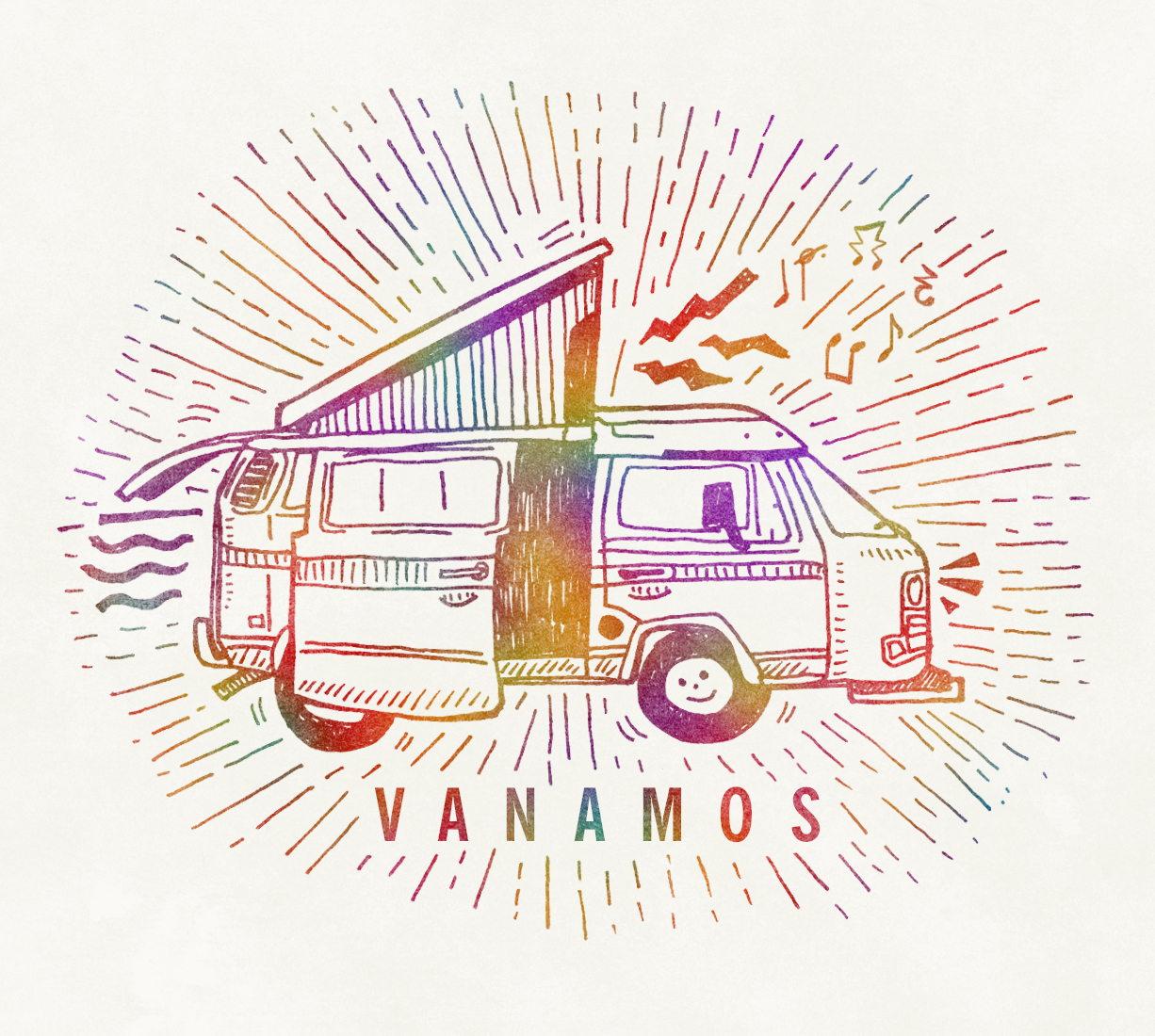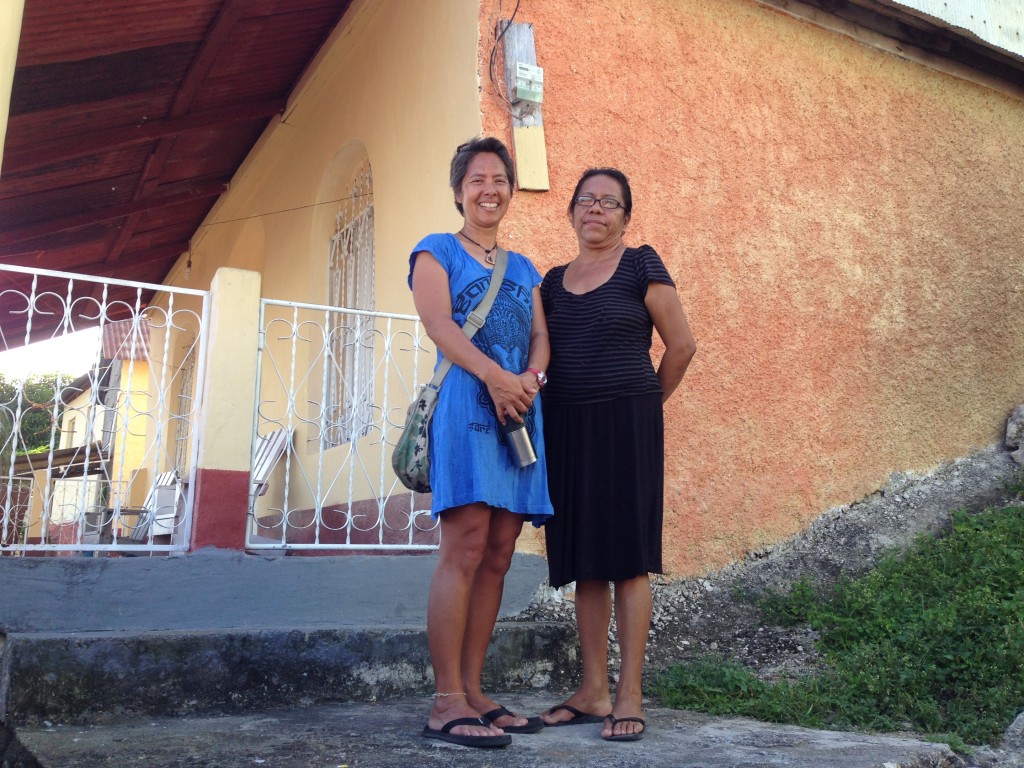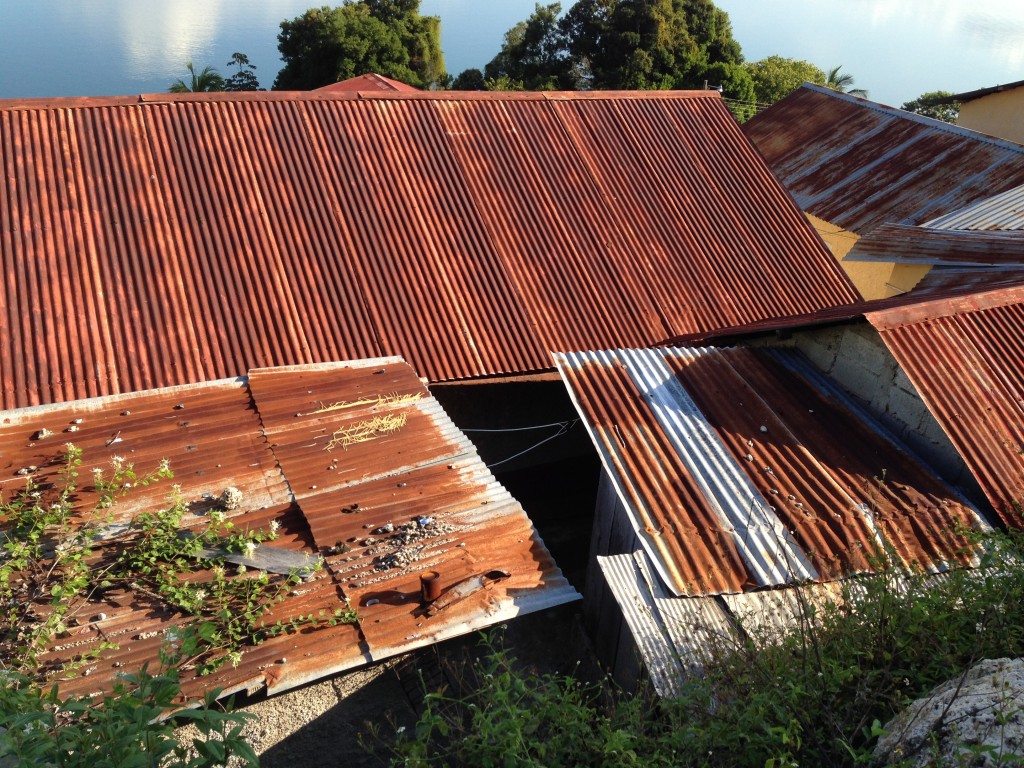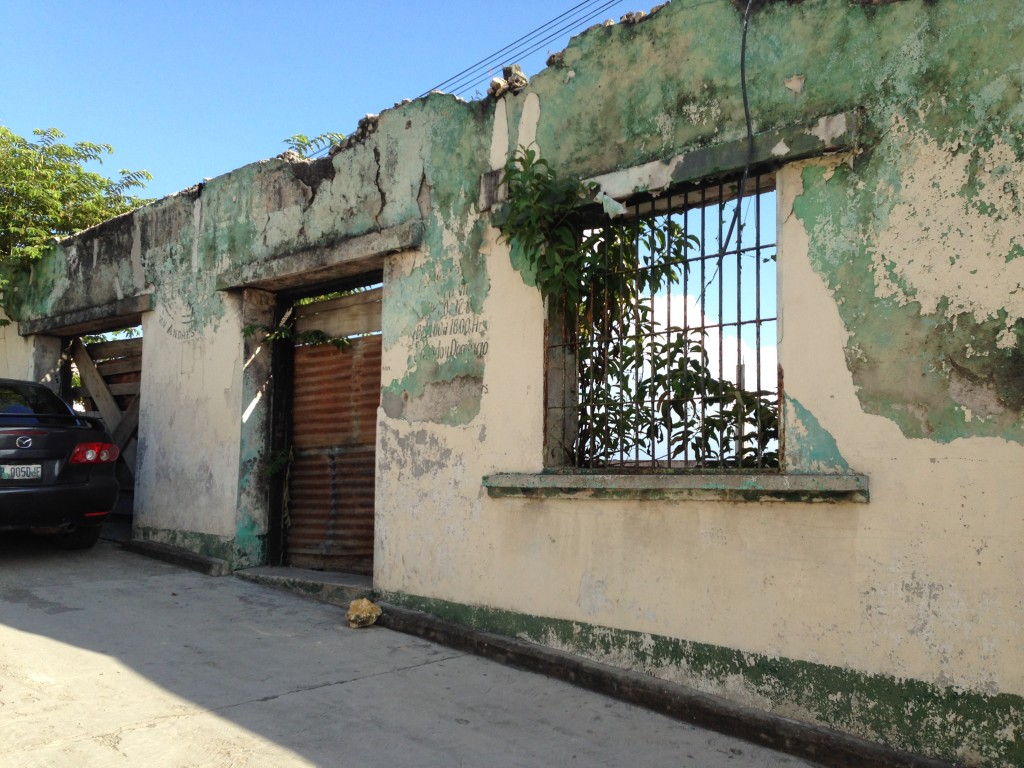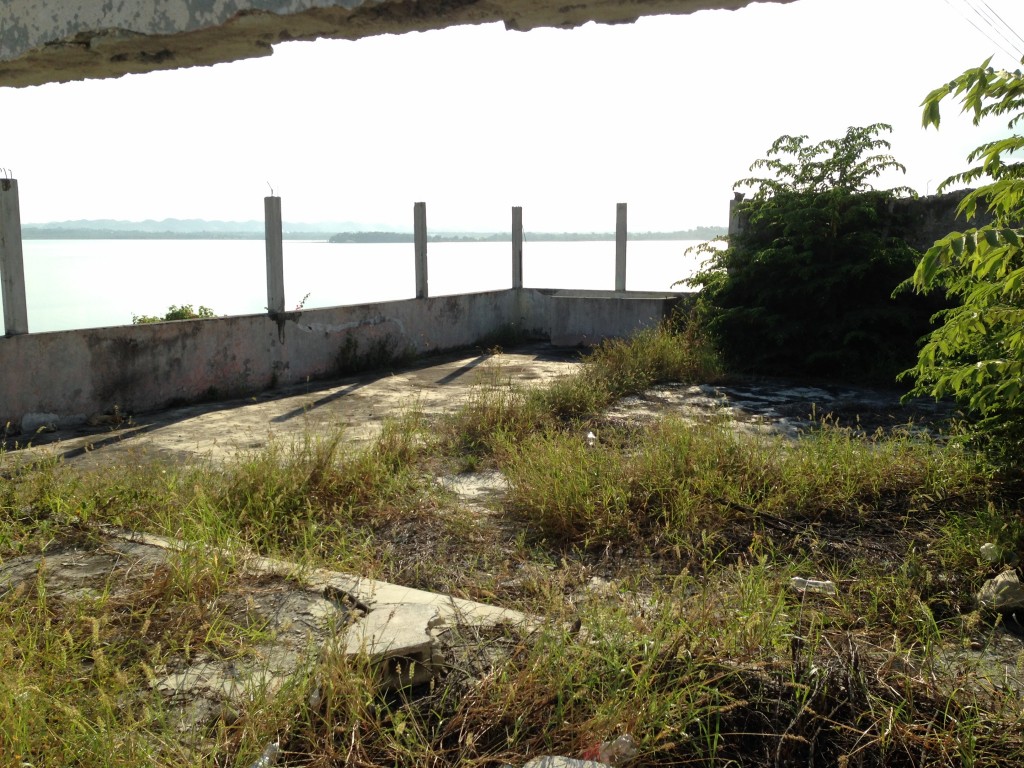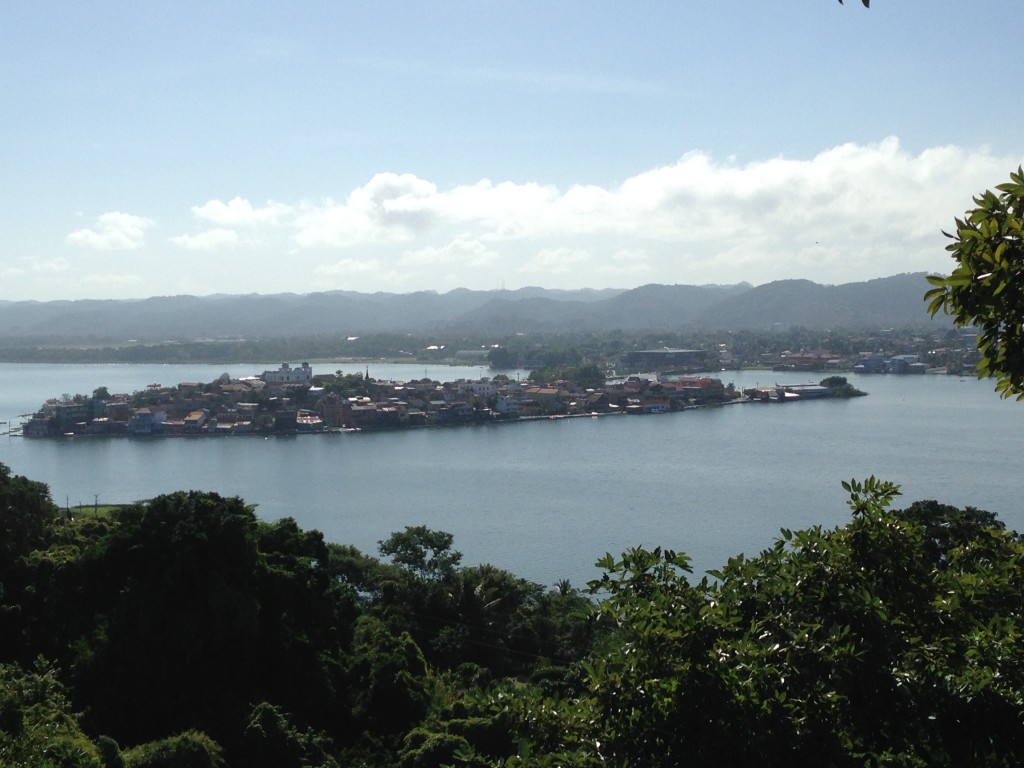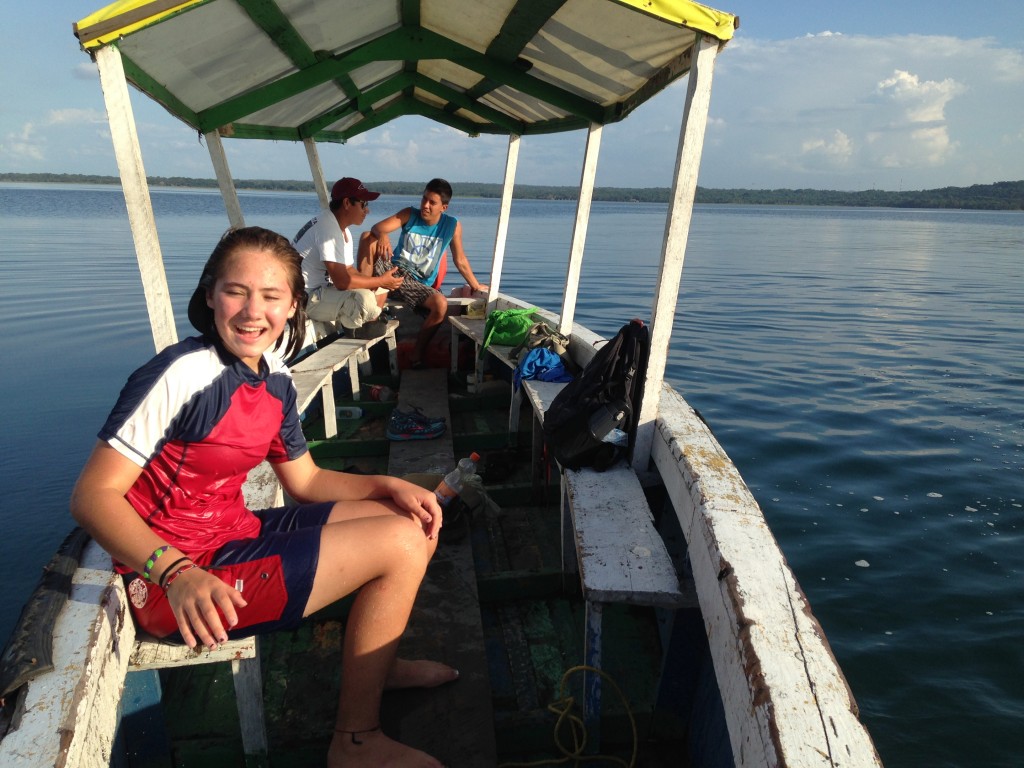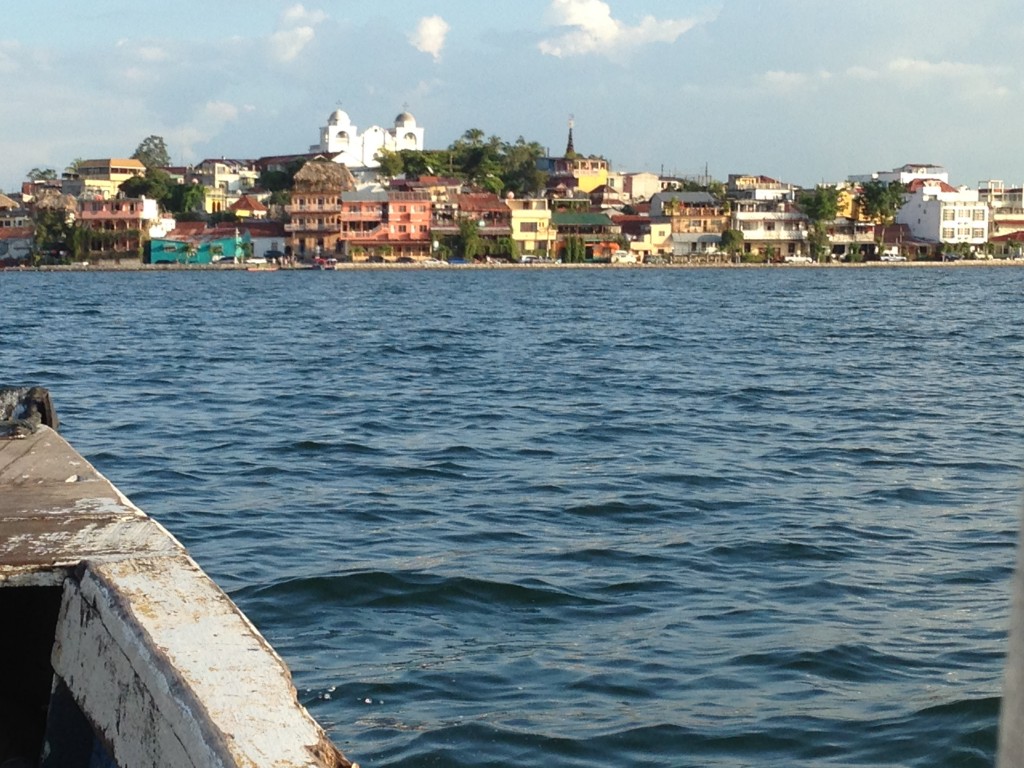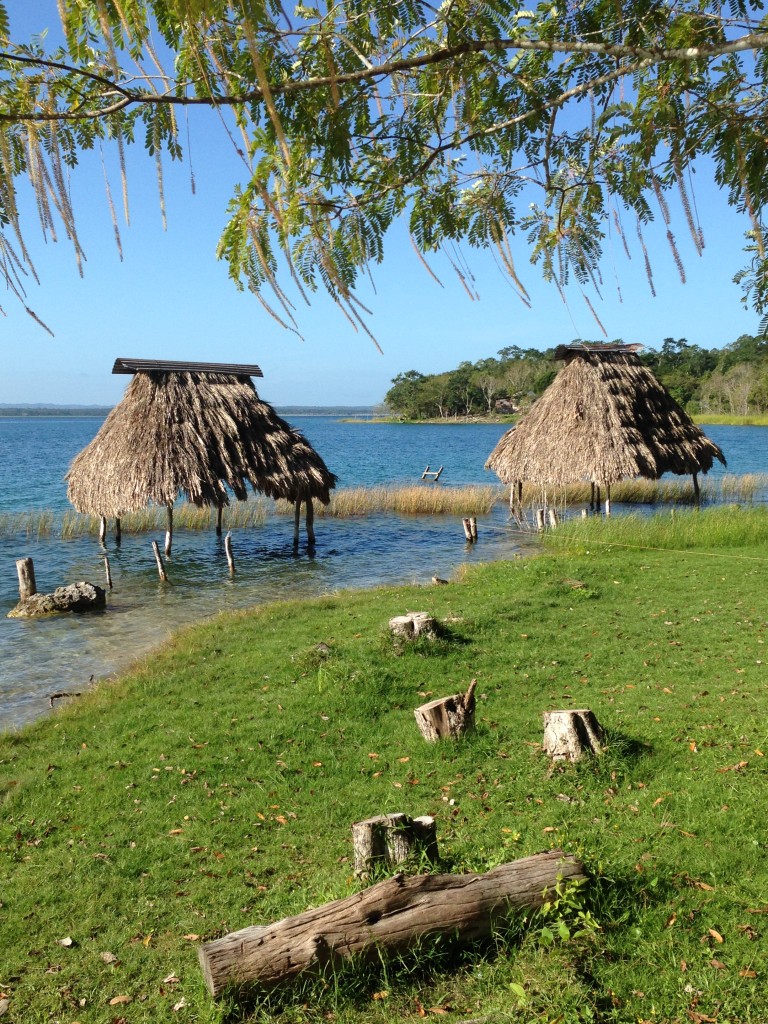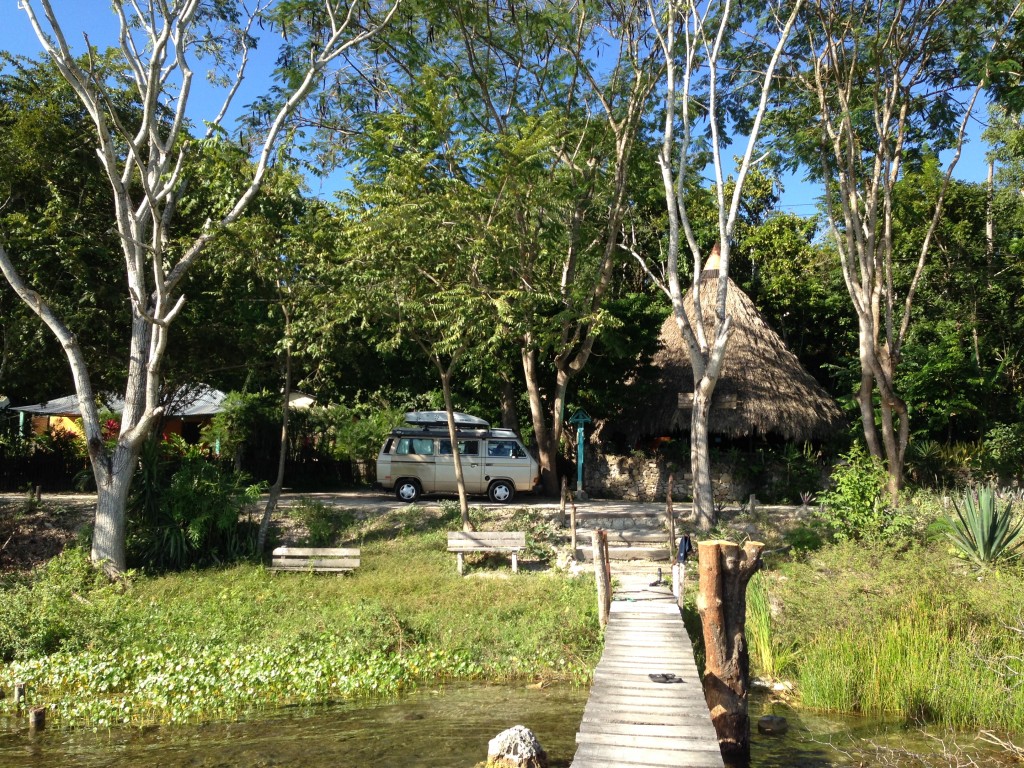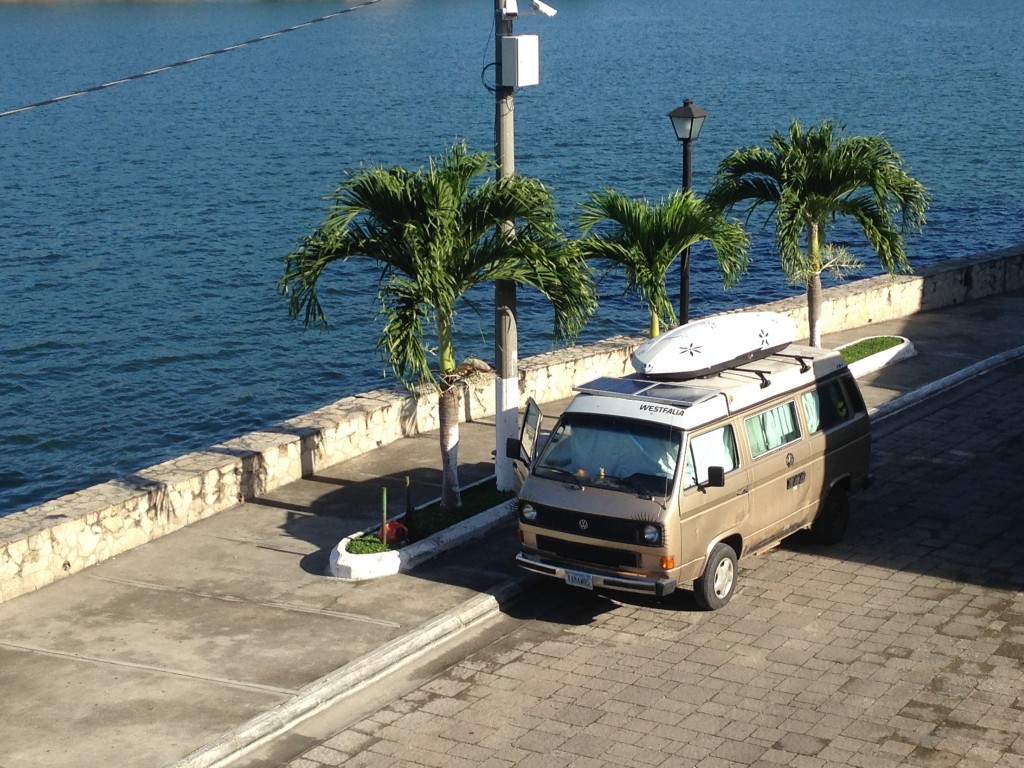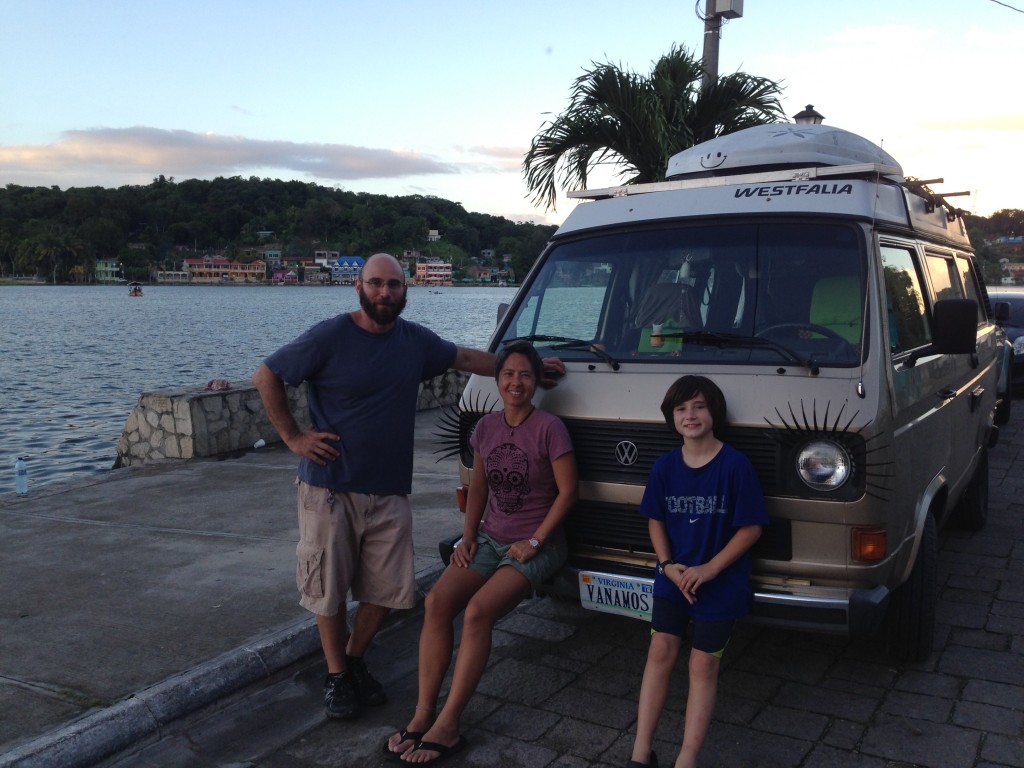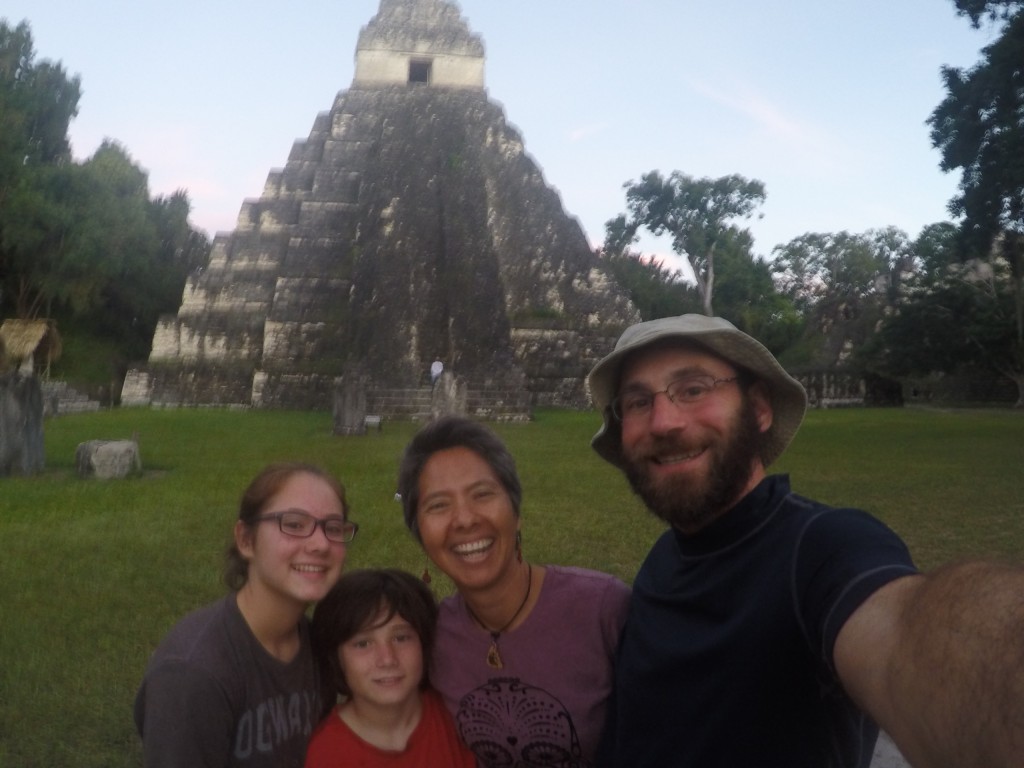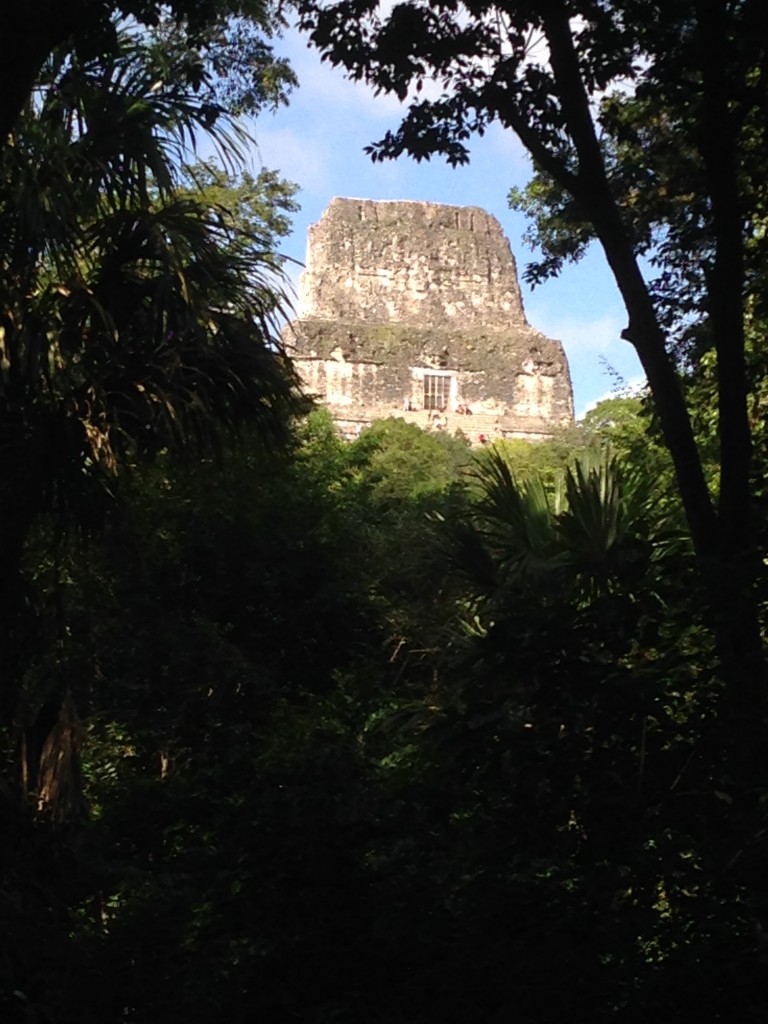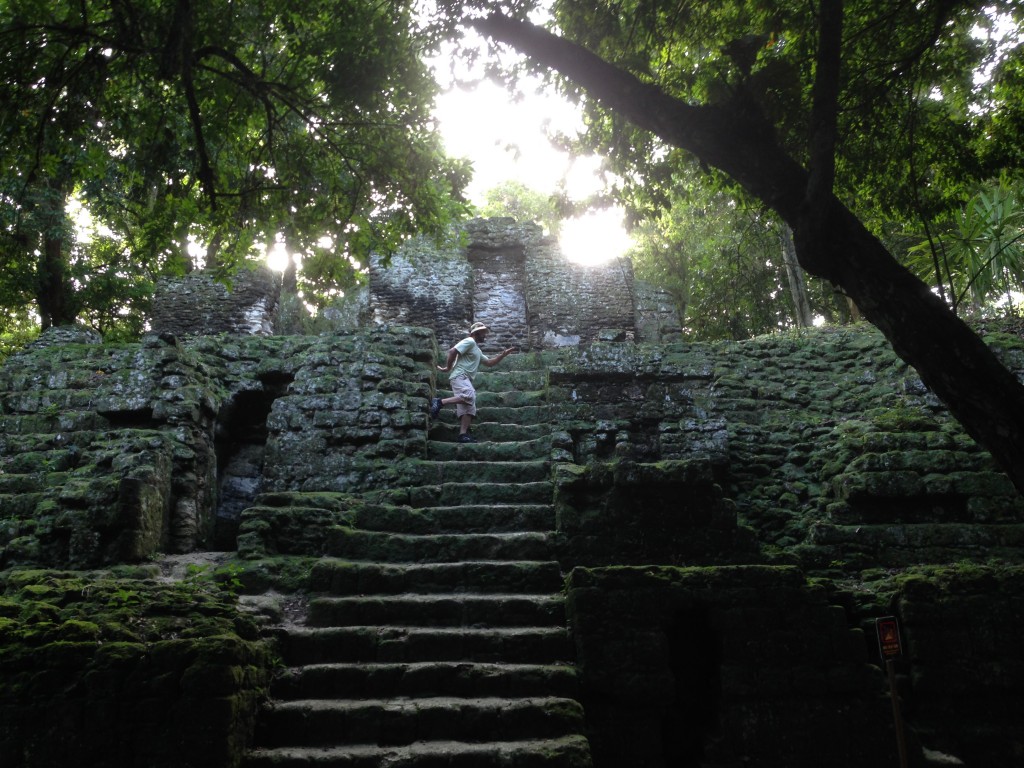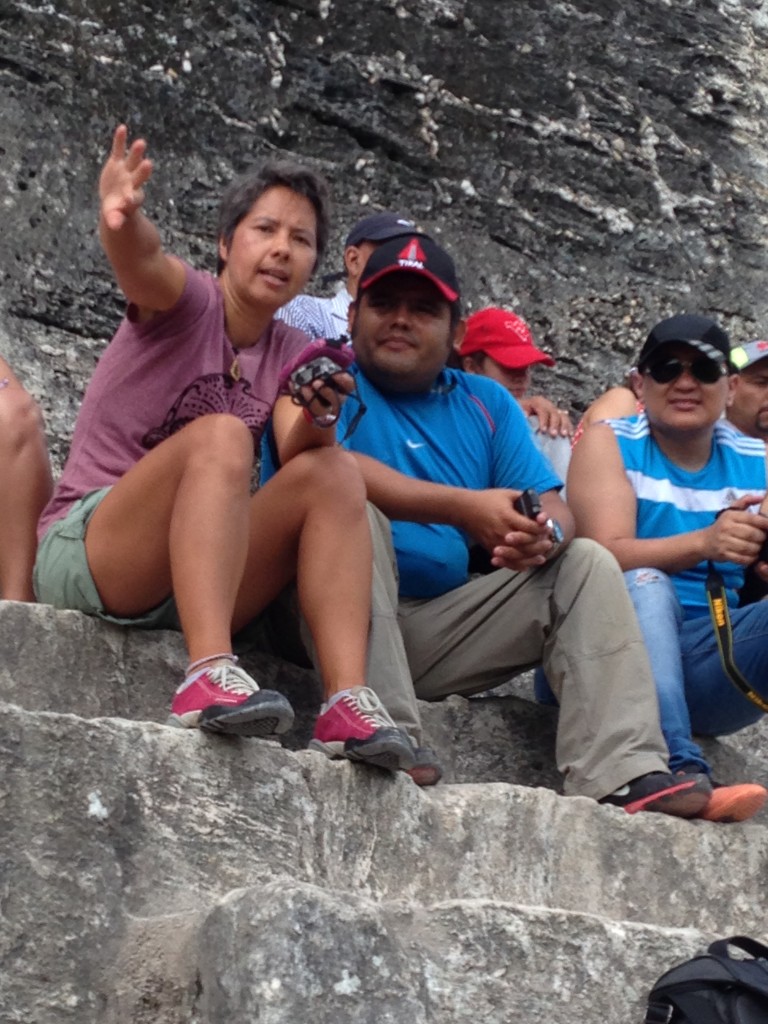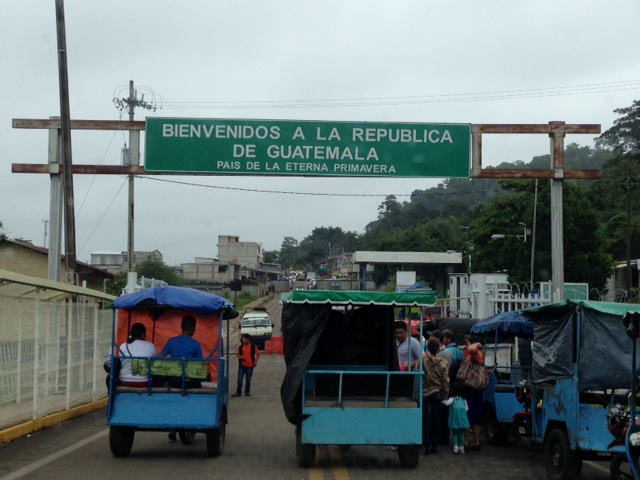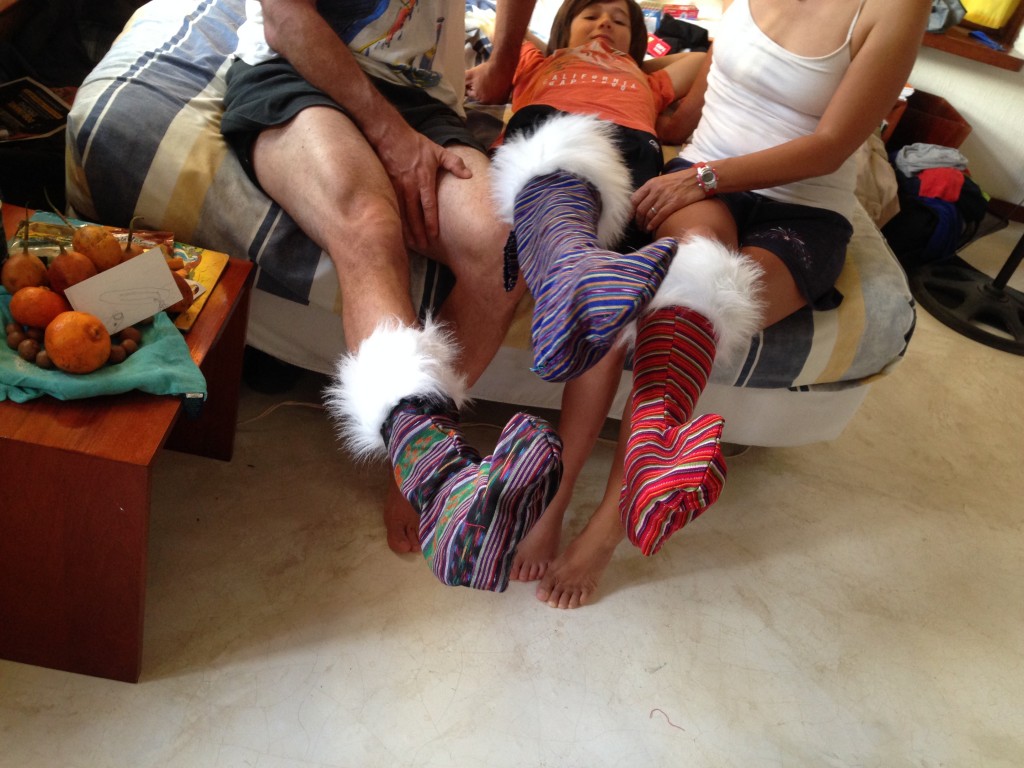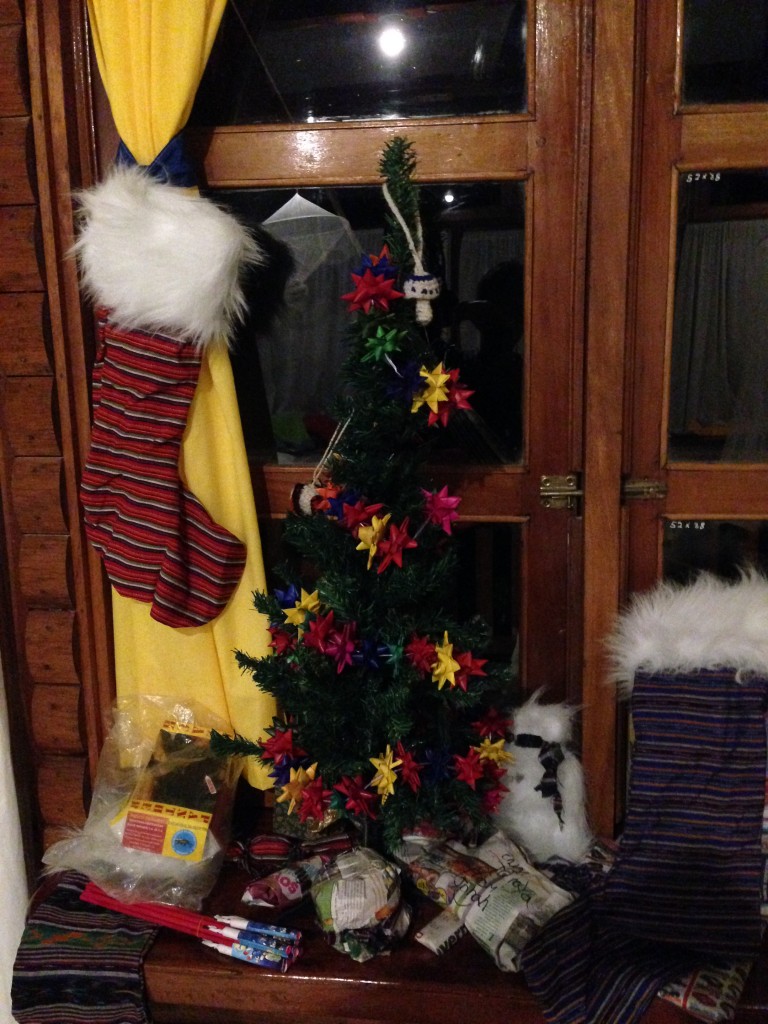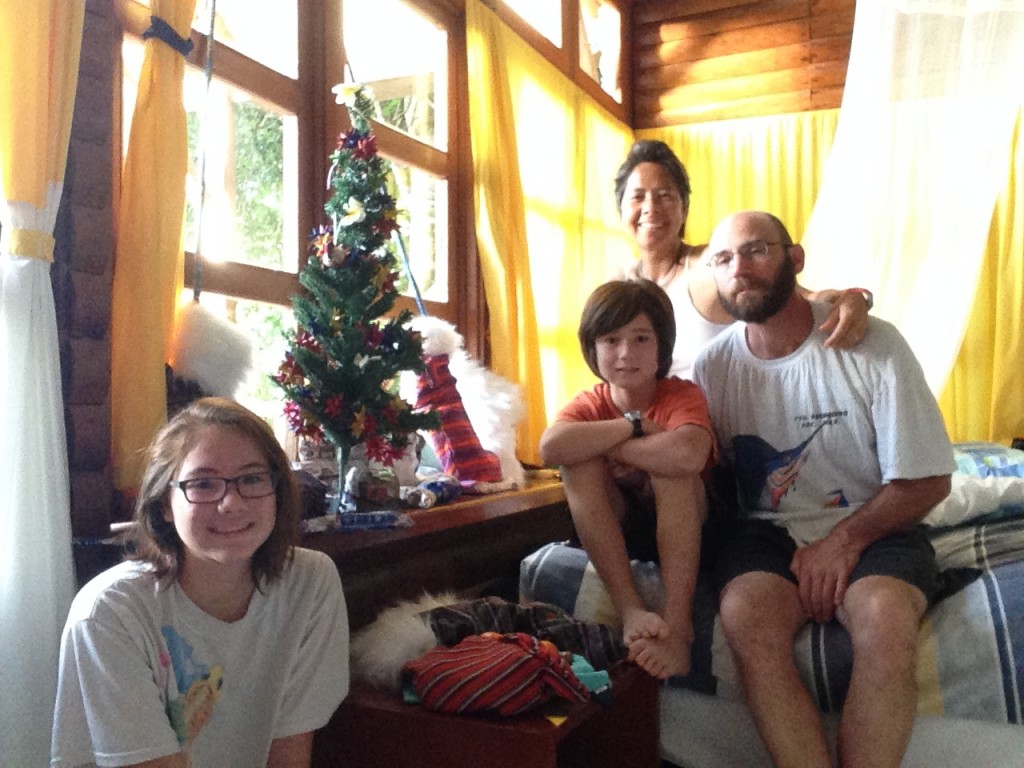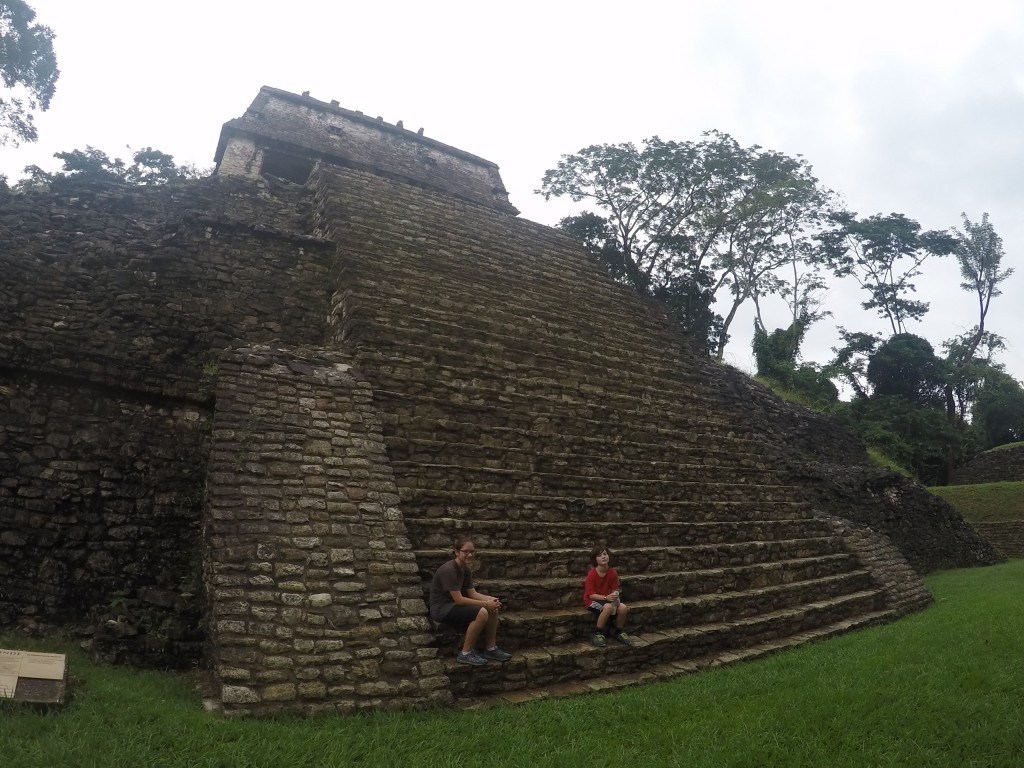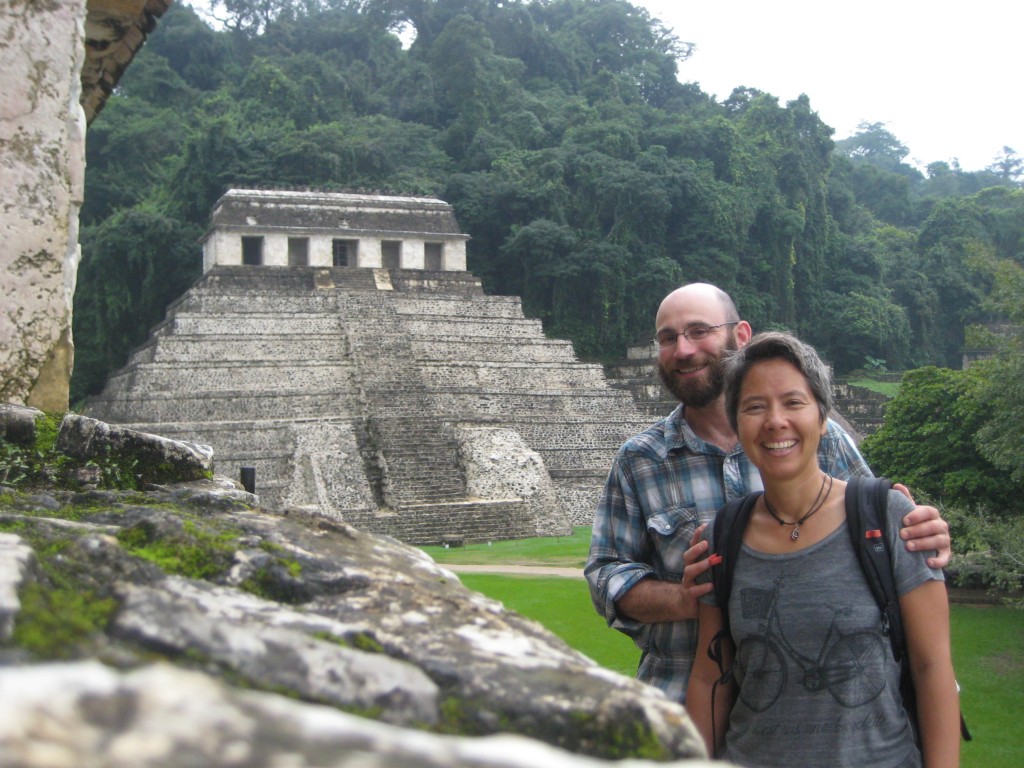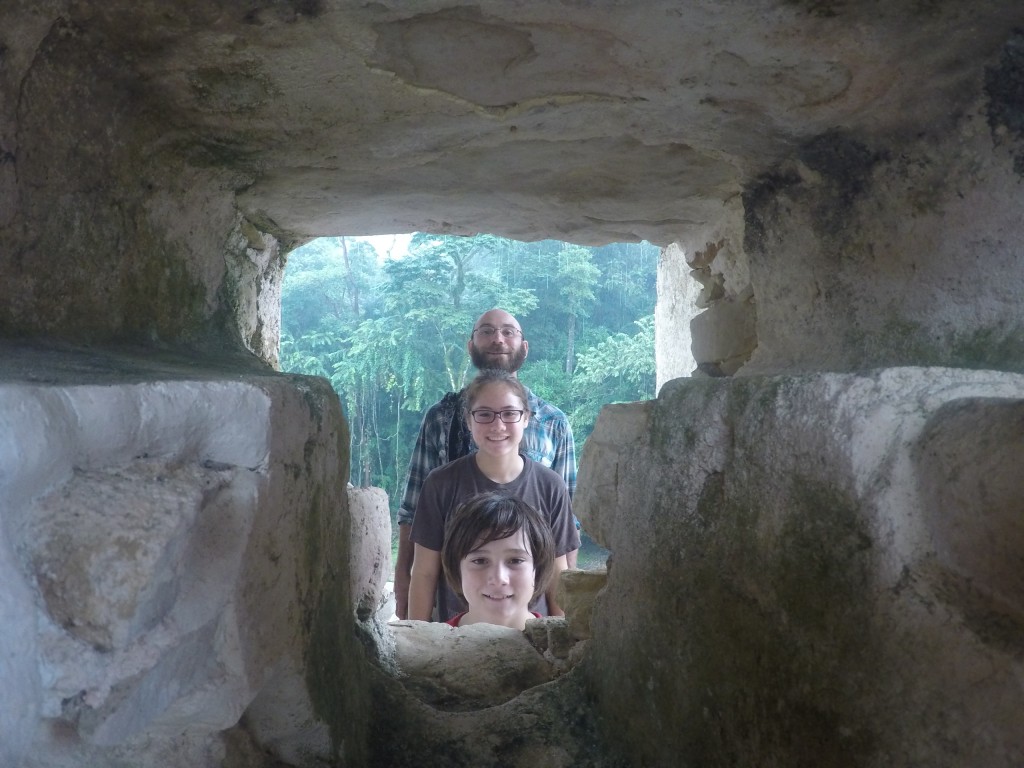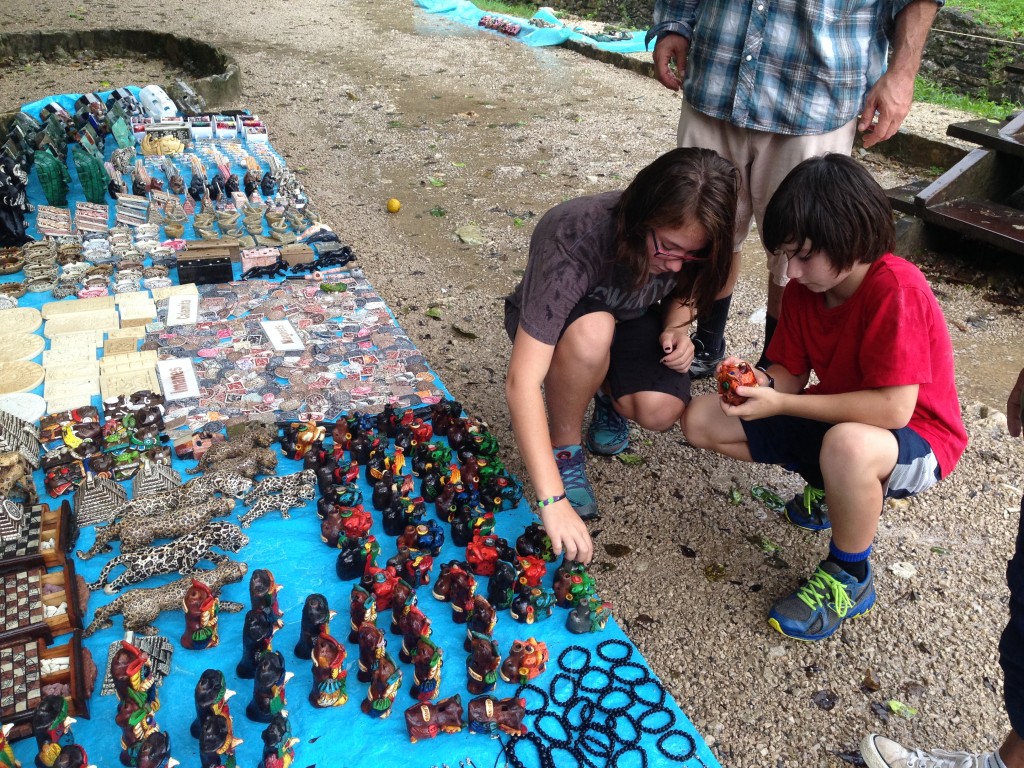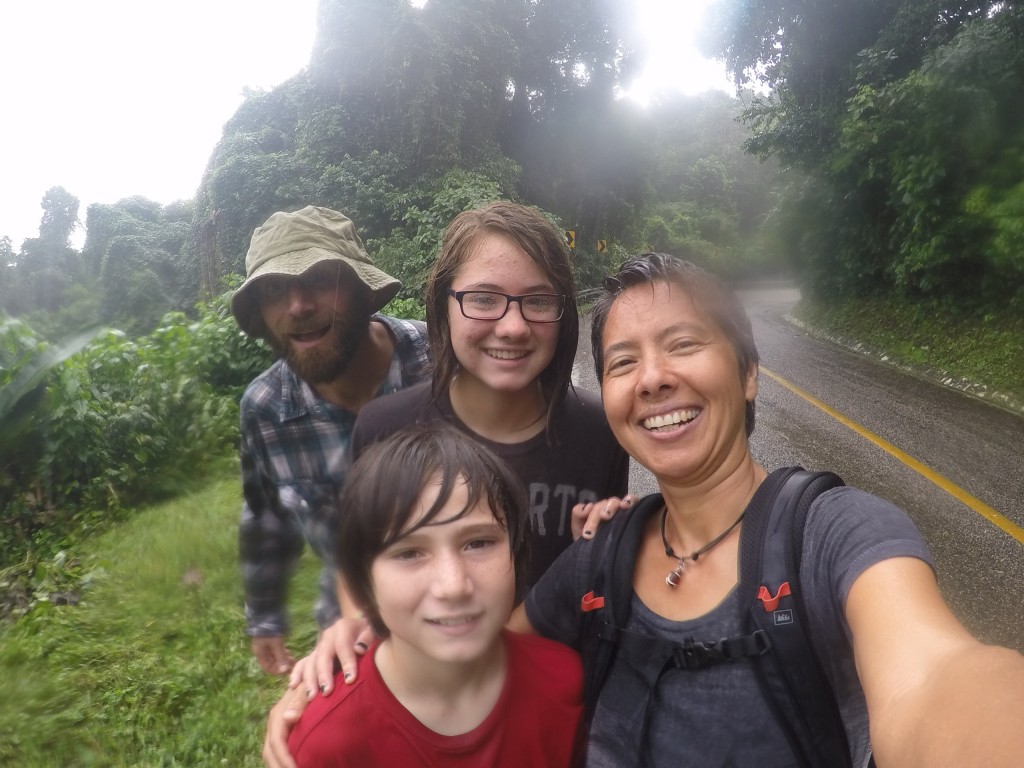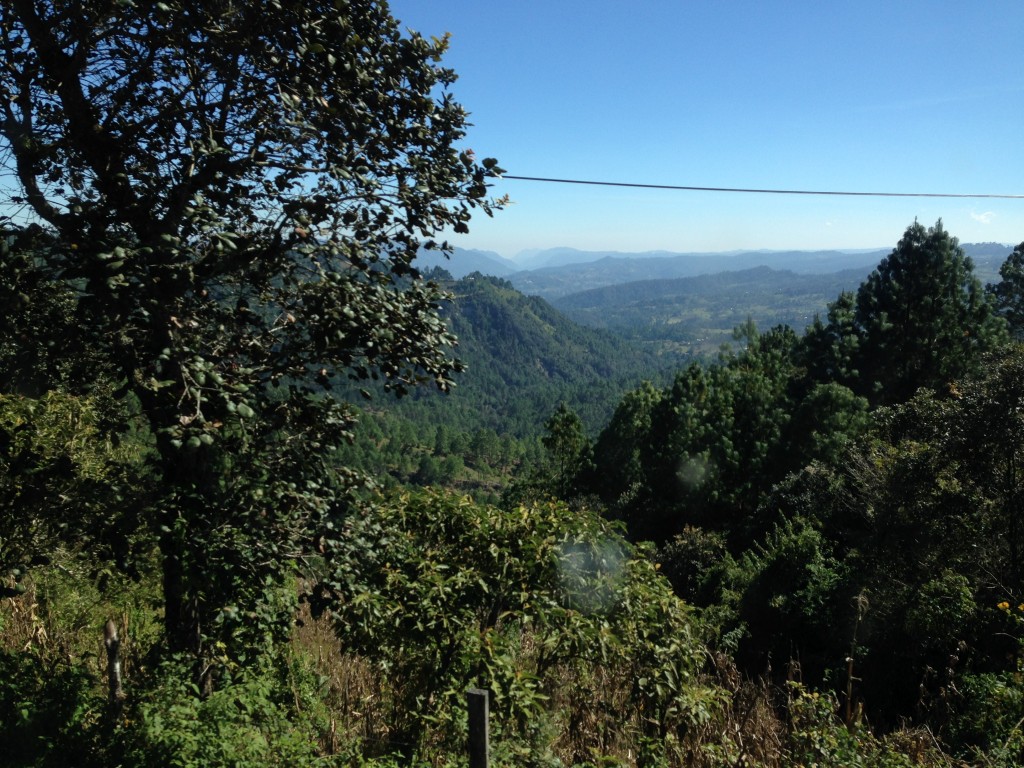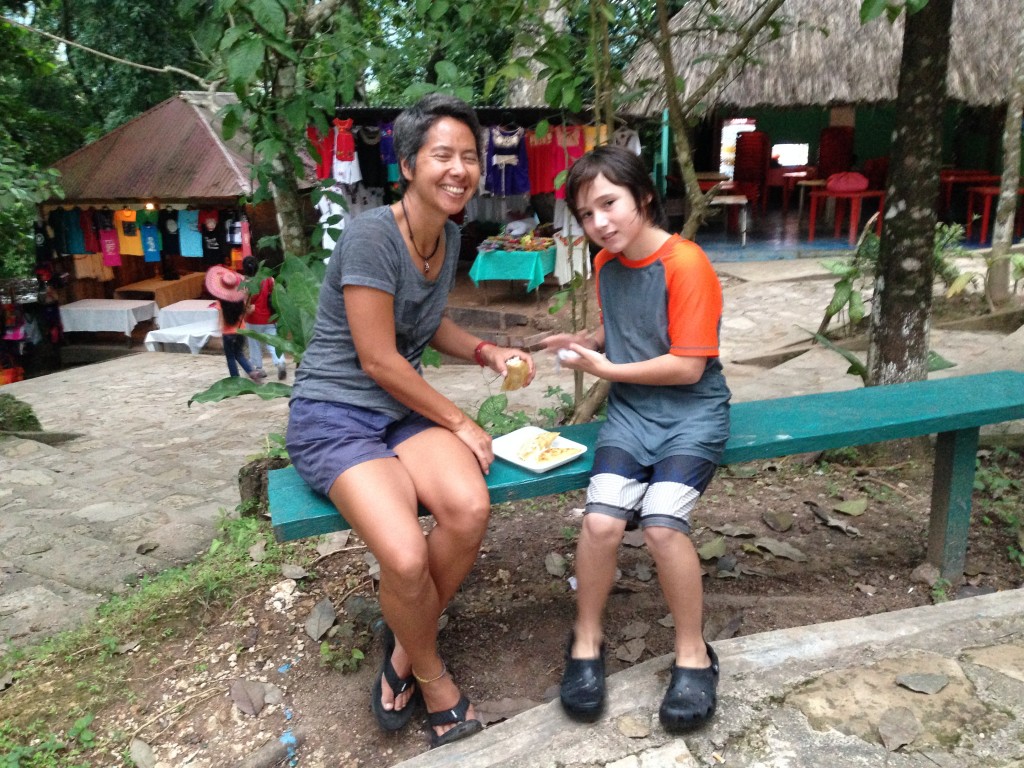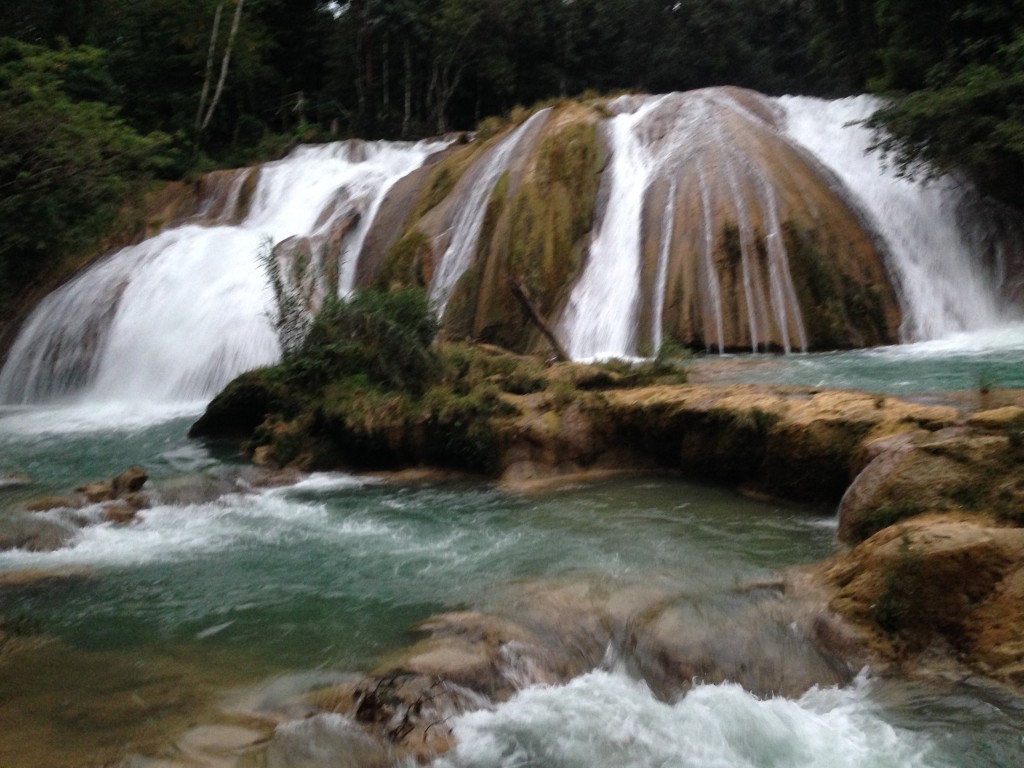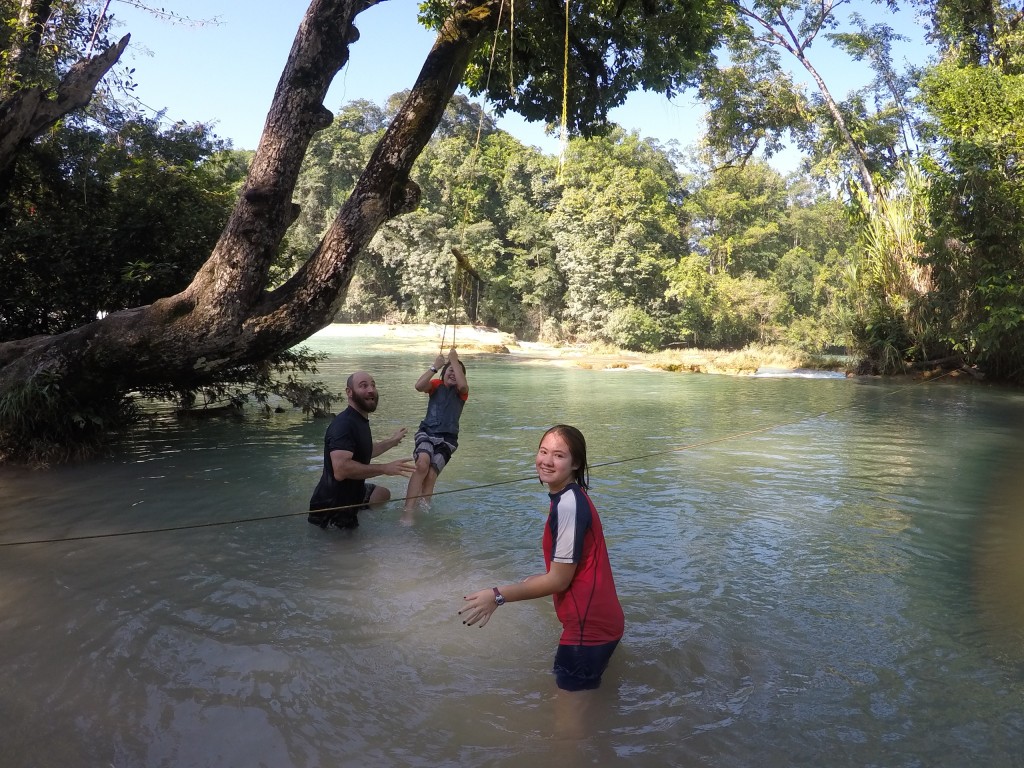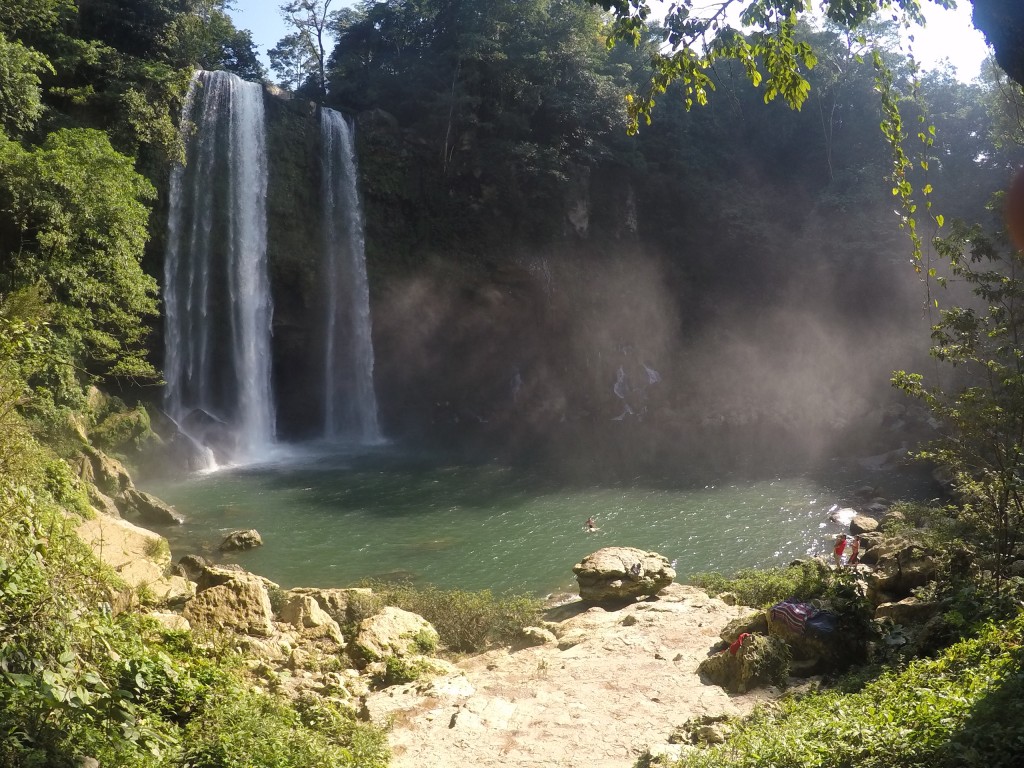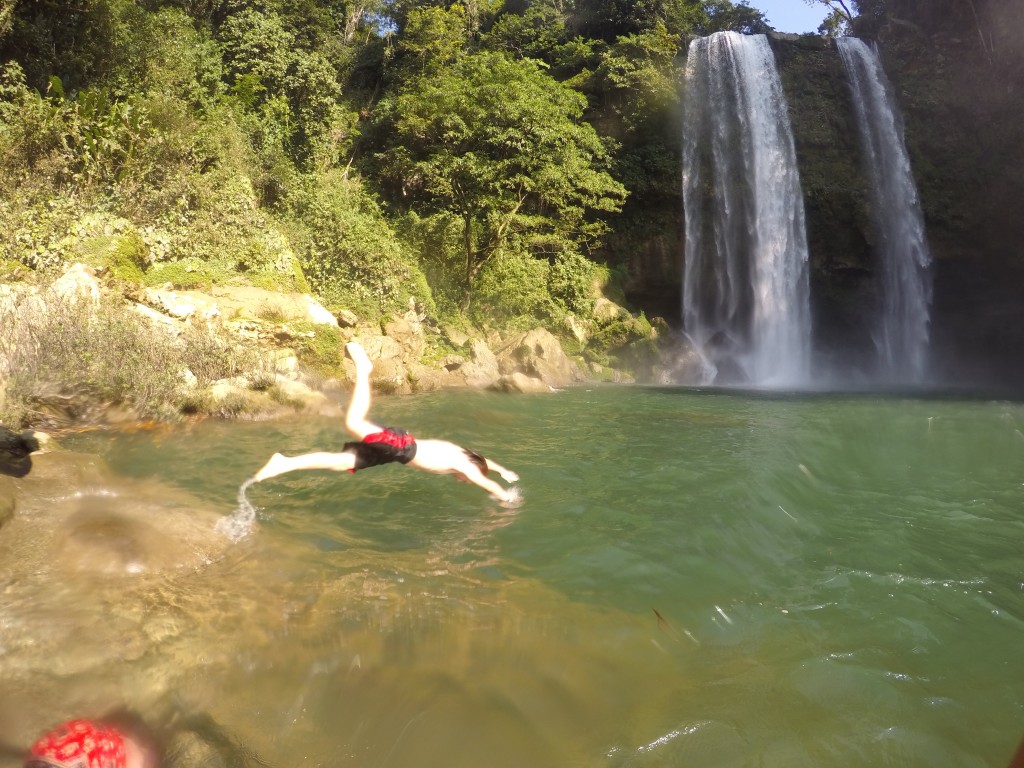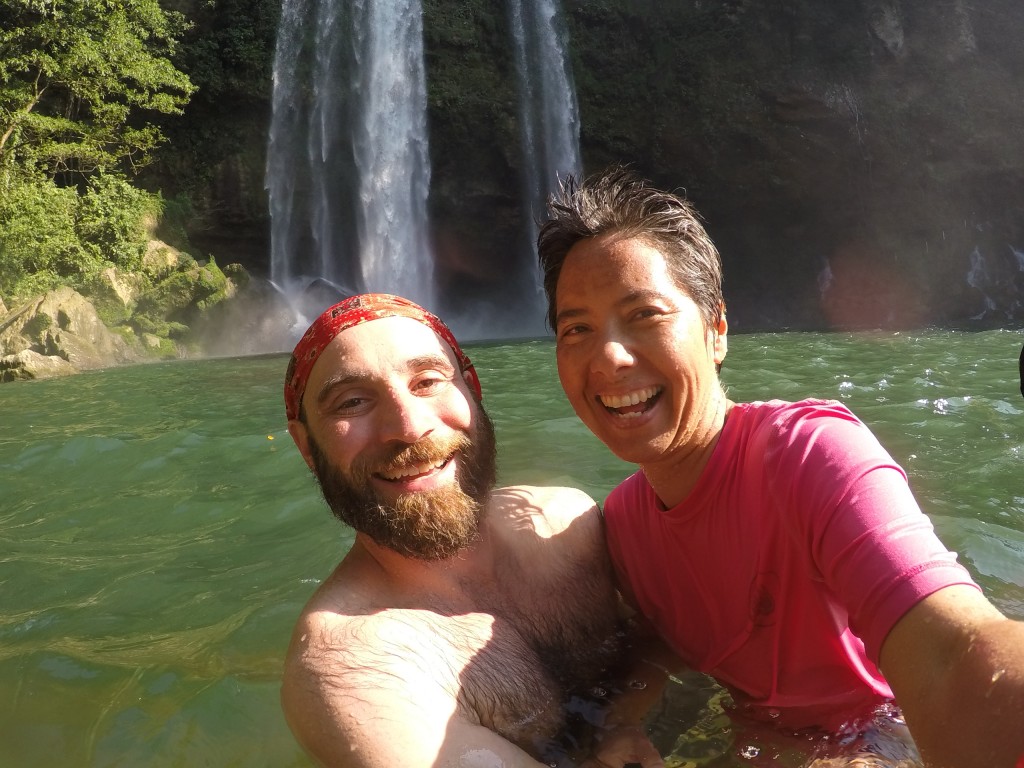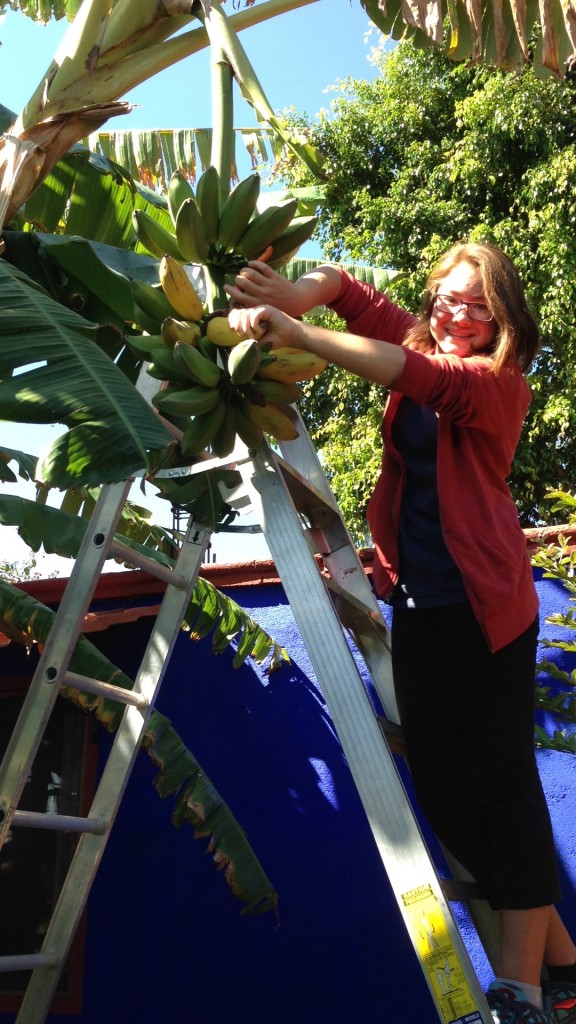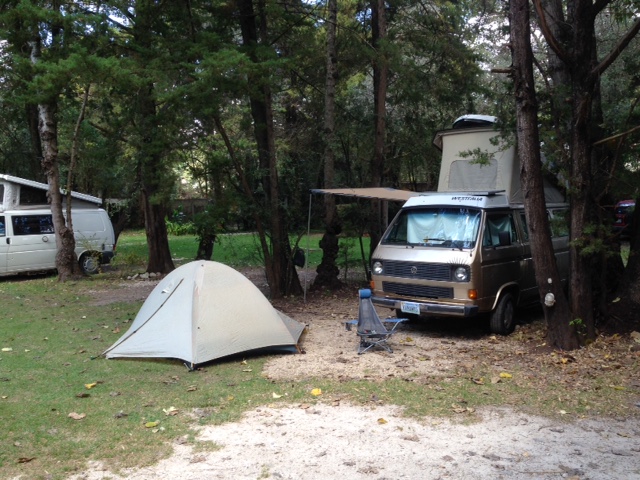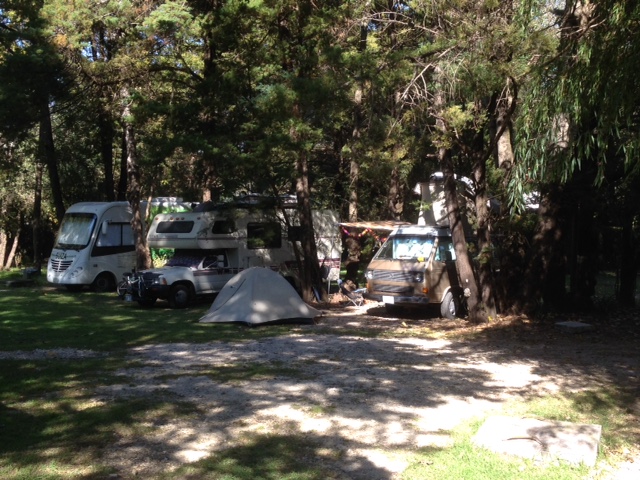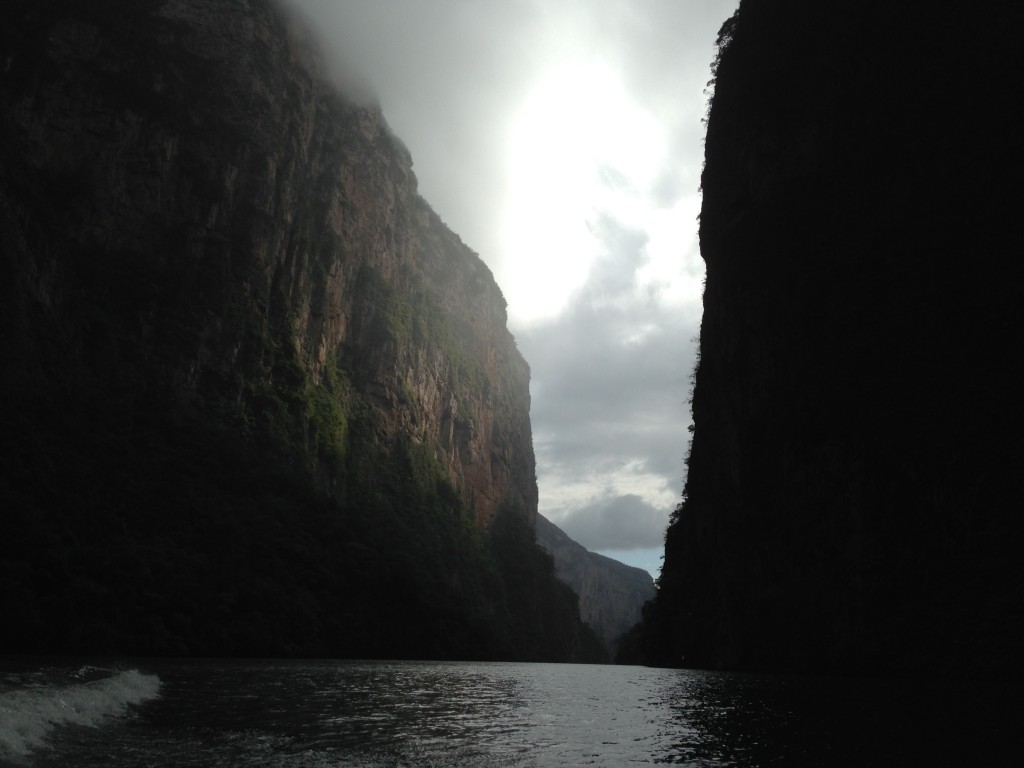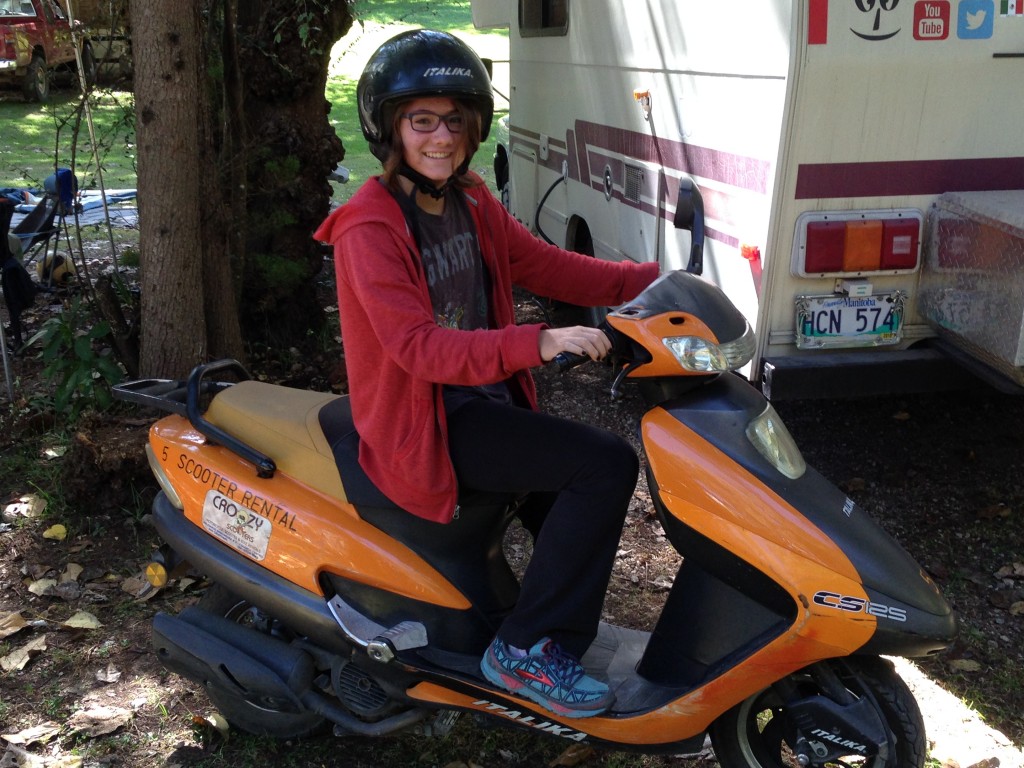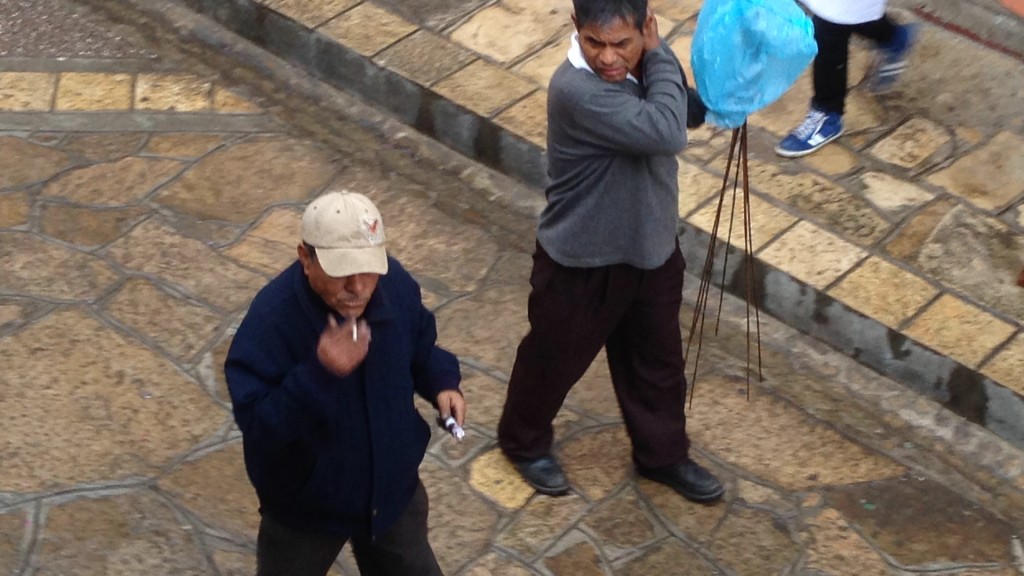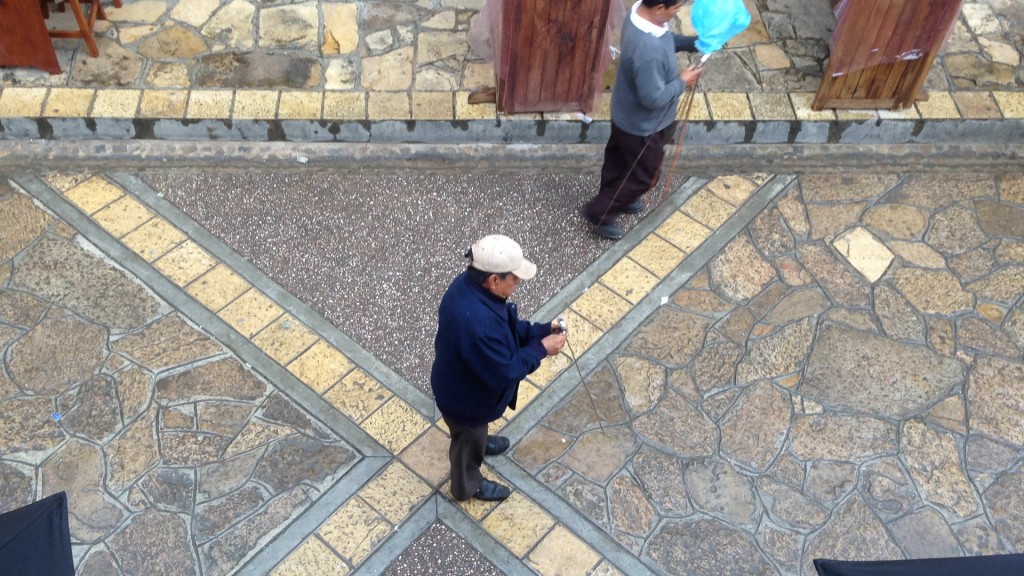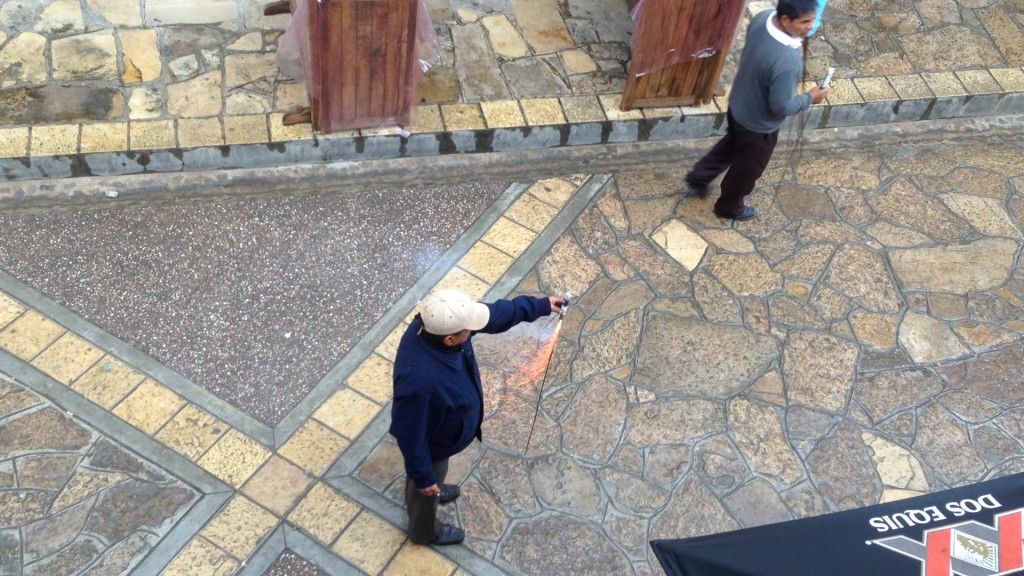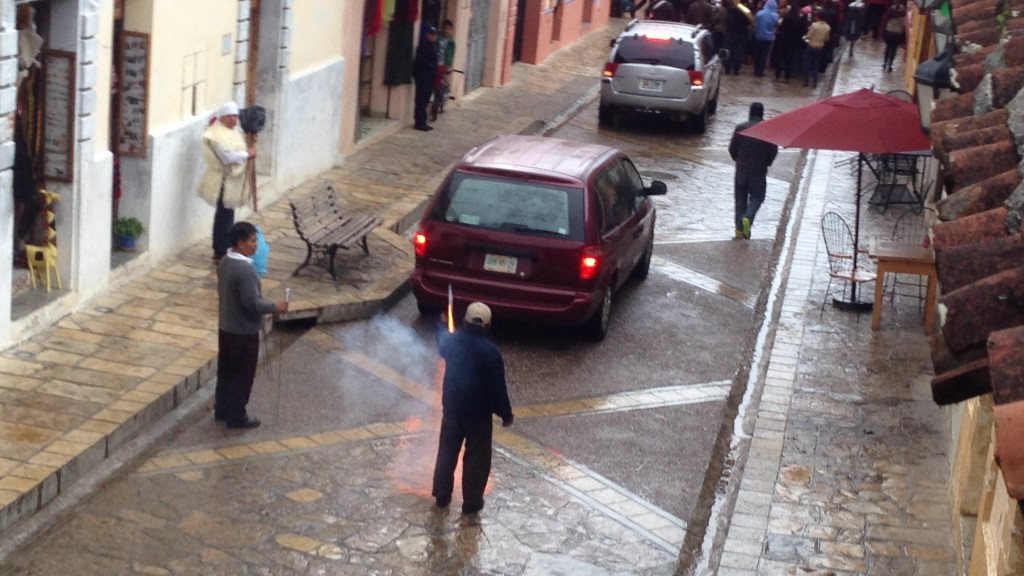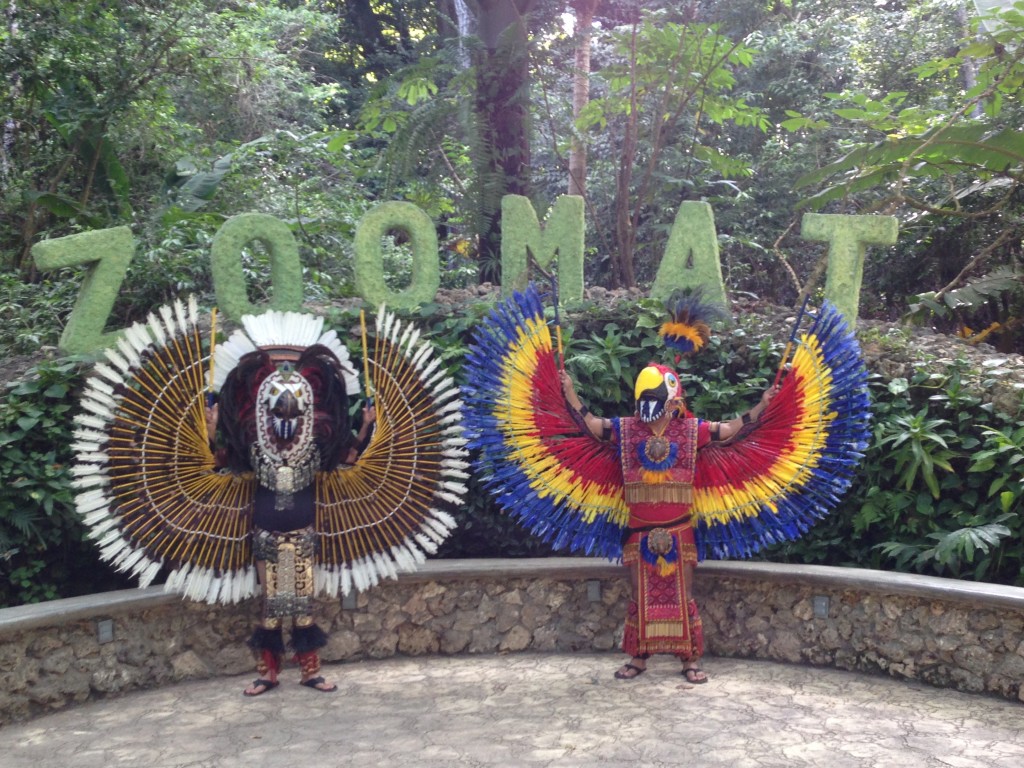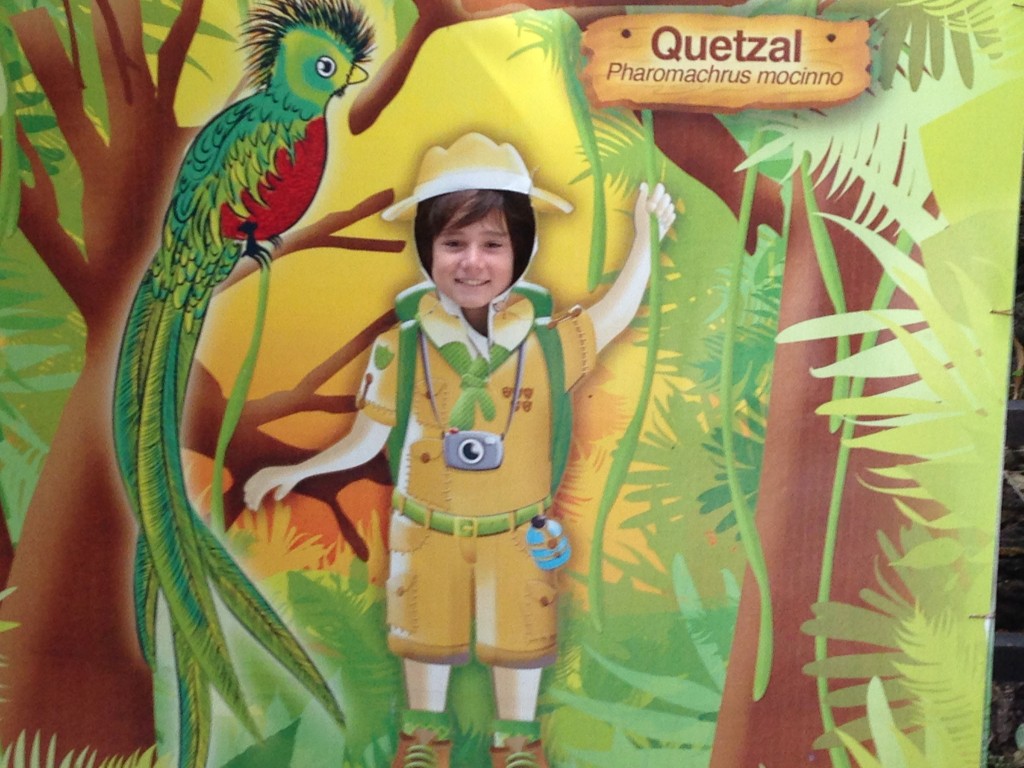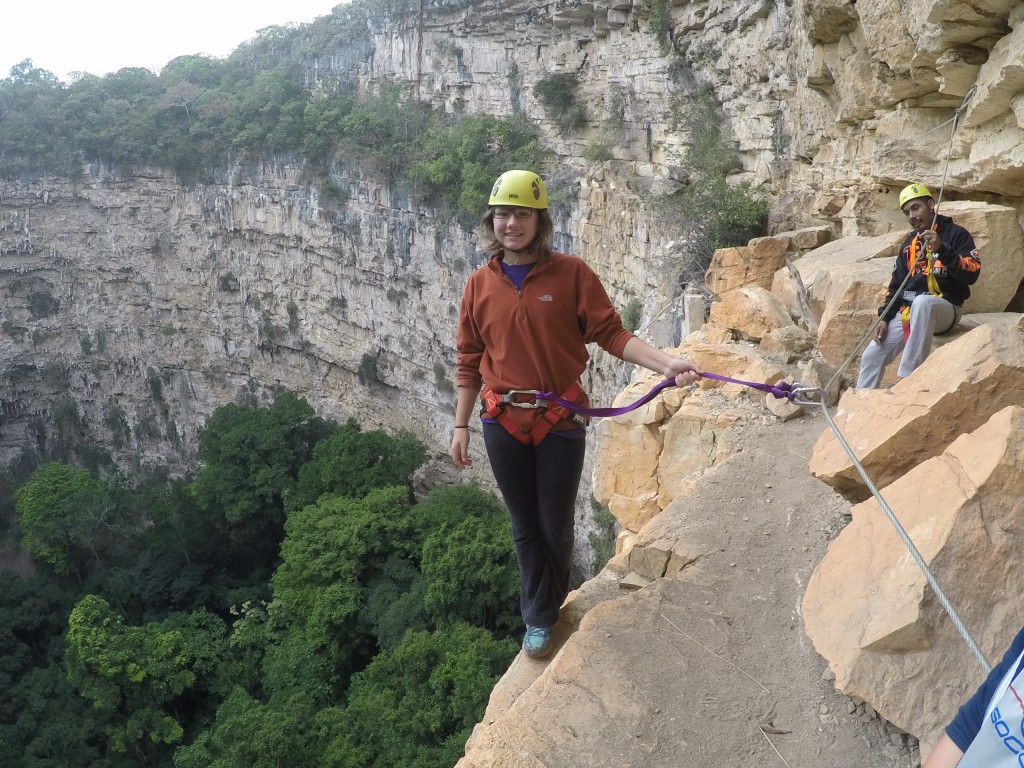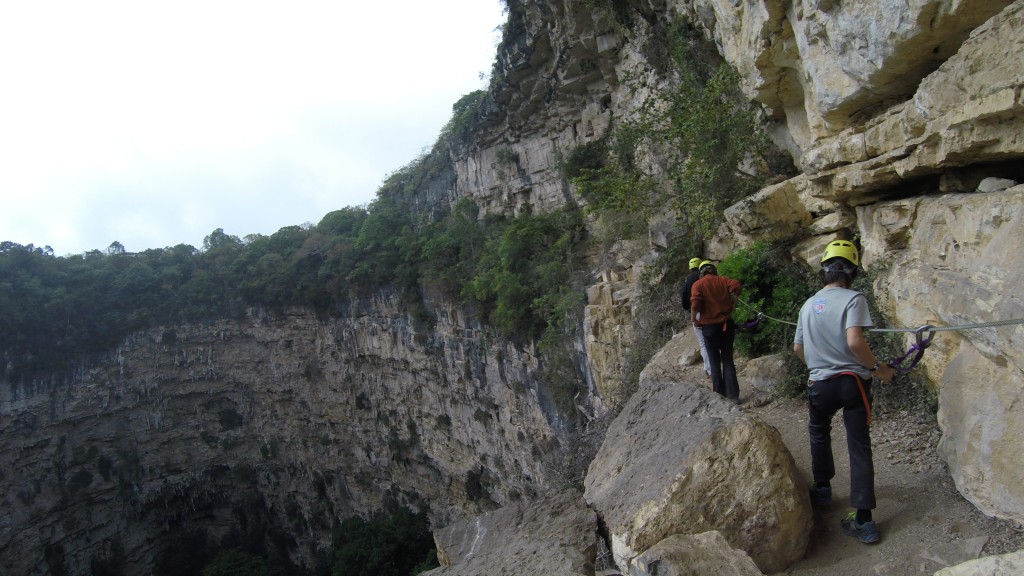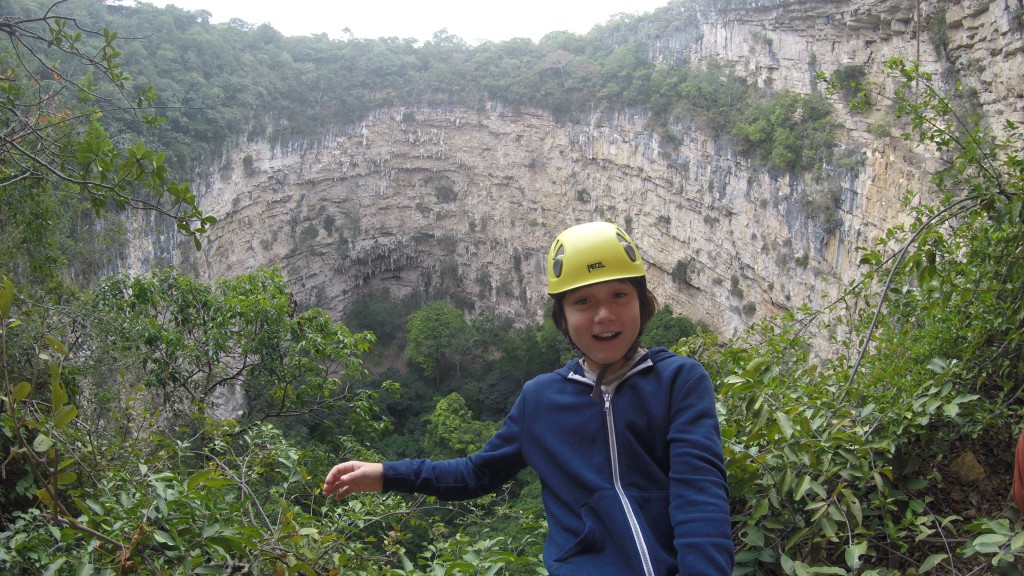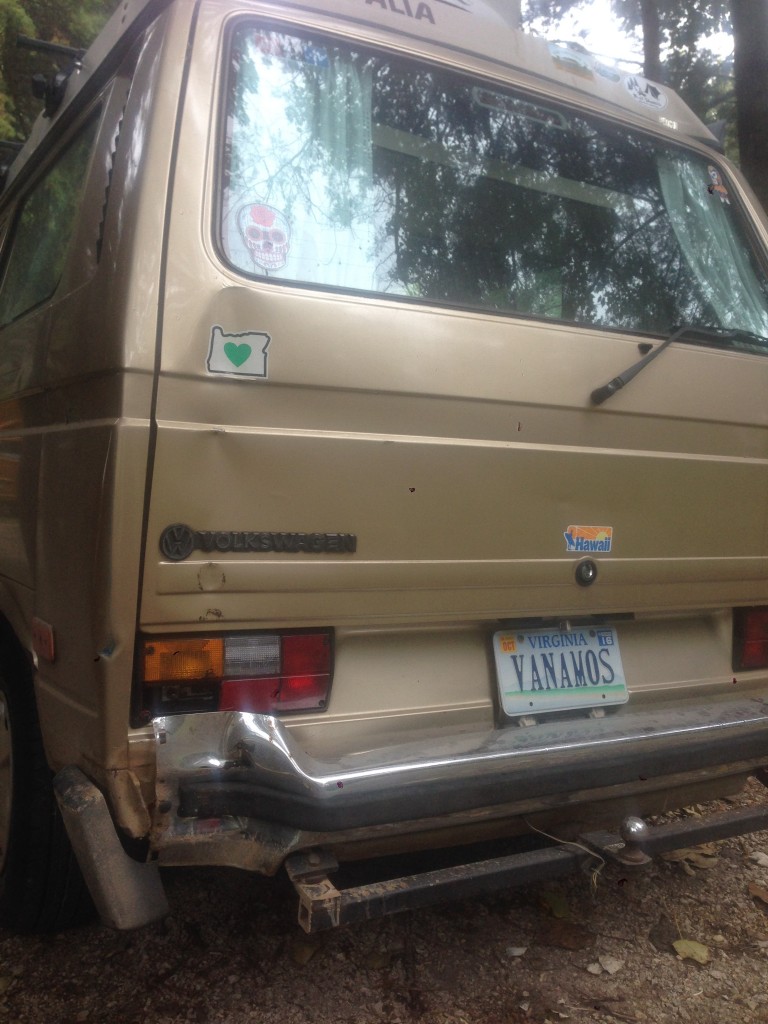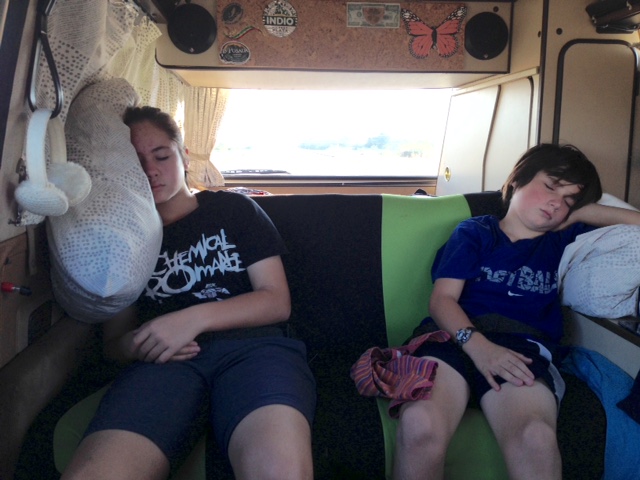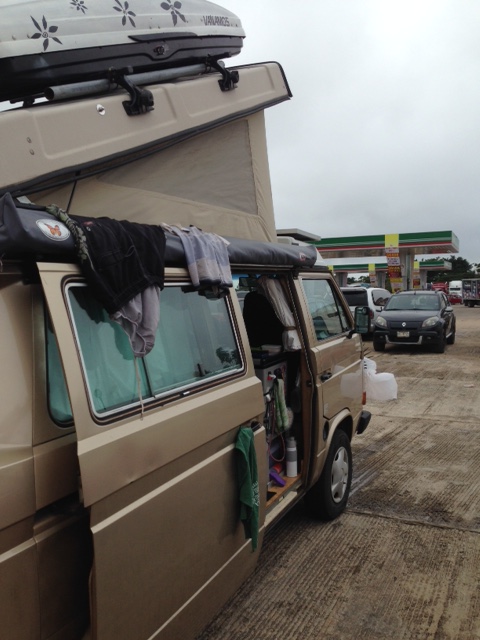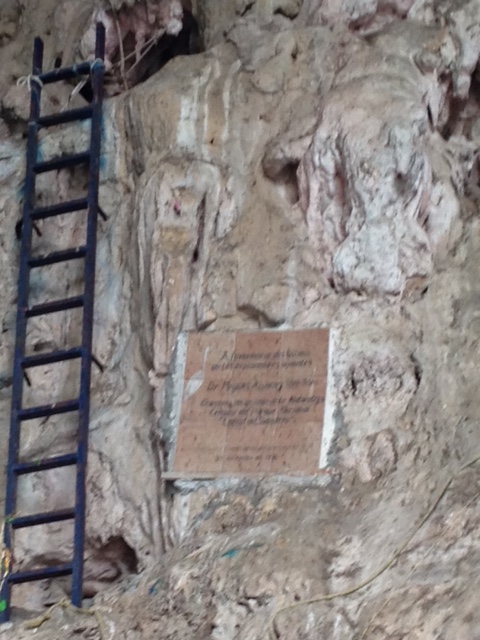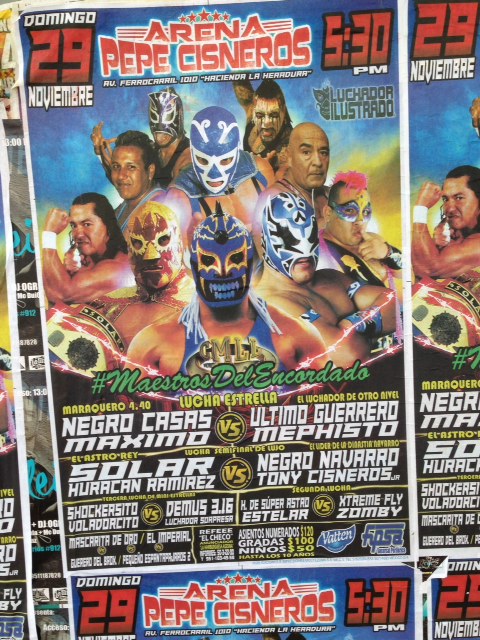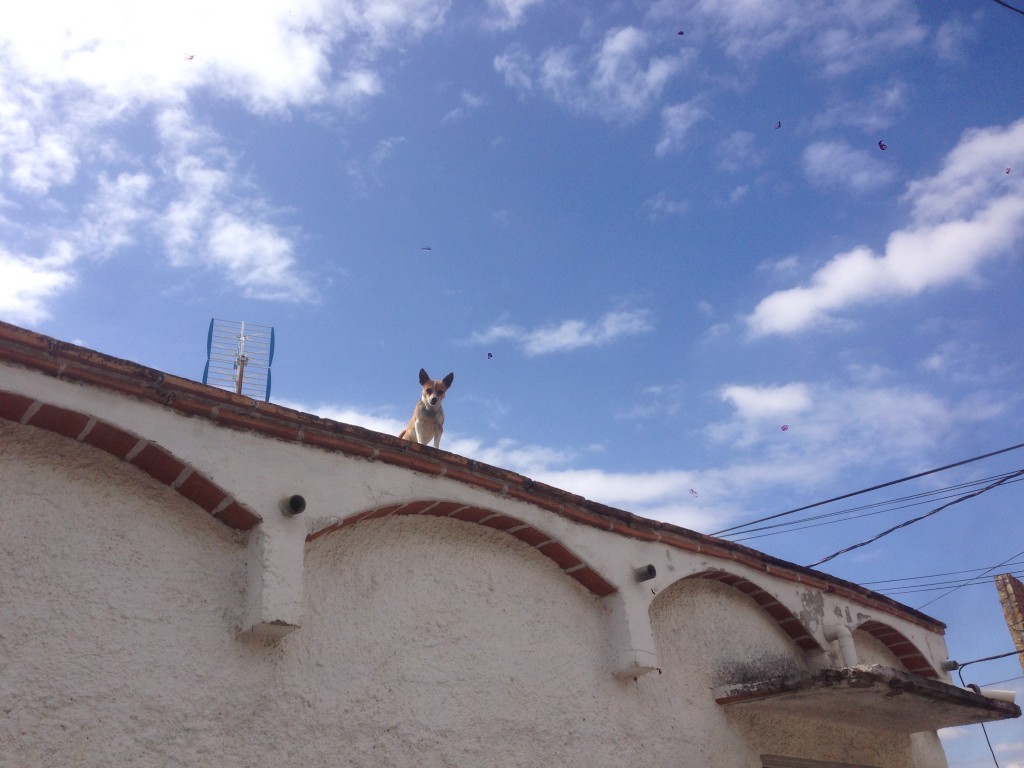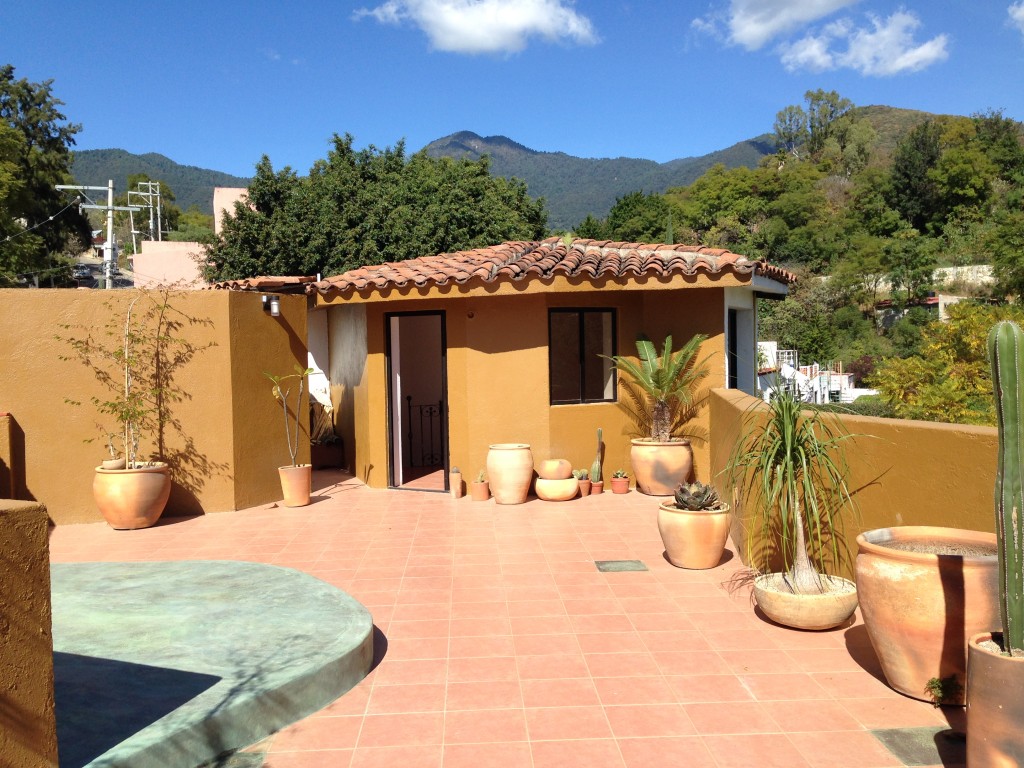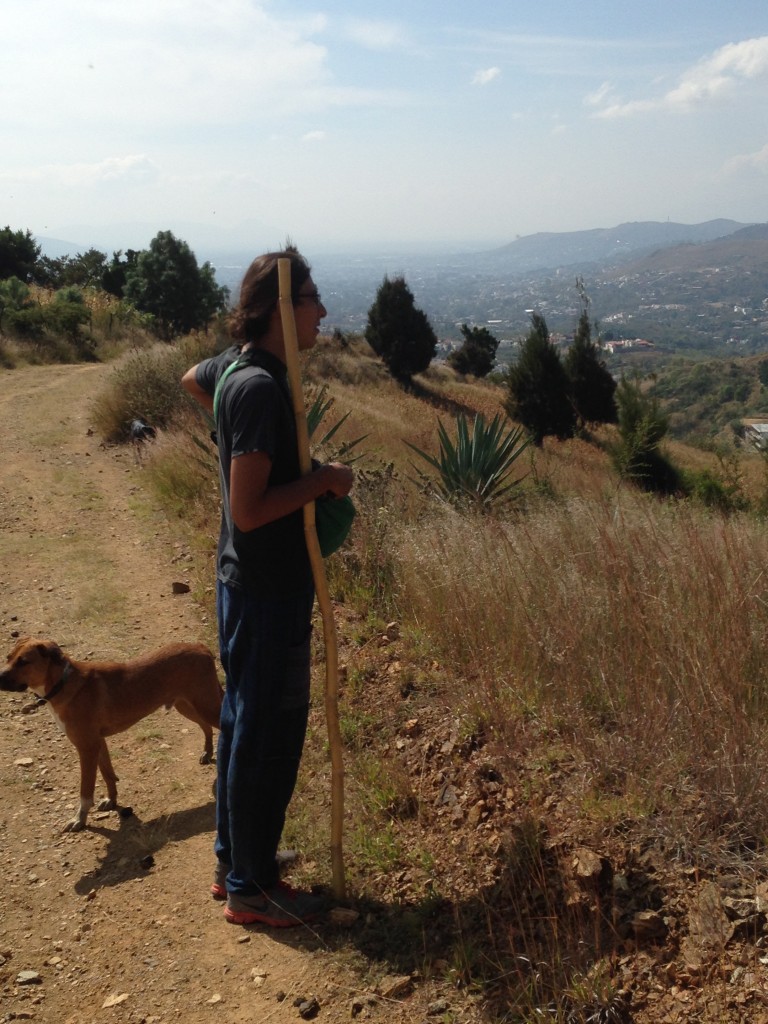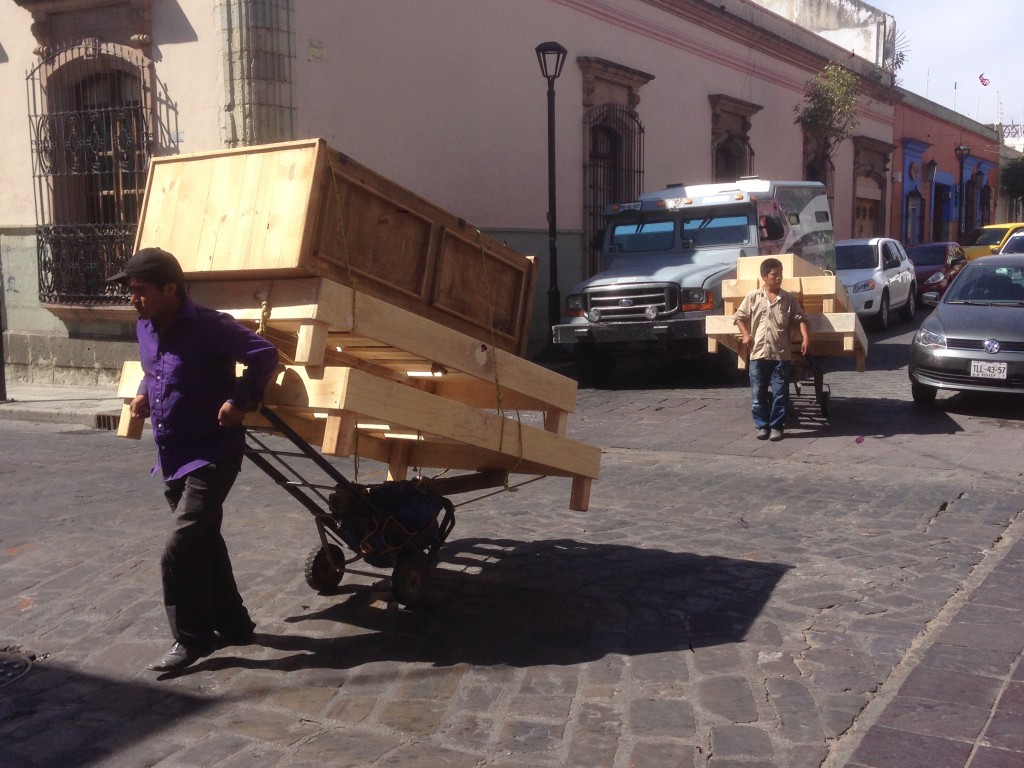We left Alexandria, Virginia on August 1, 2015, in our 1985 VW Westphalia and spent nights in North Carolina, Georgia, Alabama, Mississippi, Arkansas, Oklahoma, and Texas before finding ourselves at the U.S.-Mexican border in Laredo, Texas. When we crossed into Mexico on August 26, we expected to spend a month making our way to Belize and to be in Panama by Christmas. Happily, that plan didn’t work out and we spent the next 3 ½ months experiencing Mexico, which is now one of our favorite places. We even settled down in Oaxaca for a month when we rented a house, giving our “life on the road” some semblance of stability.
Nevertheless, our goal was to overland to South America in a year, and however dim that prospect looks at the moment – as I type this on January 11, 2016, we are more than five months into our twelve month trip but have only been in Mexico and Guatemala (we planned to have been through those two countries, as well as El Salvador, Honduras, Nicaragua, and Costa Rica by now, and waiting in Panama to ship our van to Colombia) - we plan to push southward until we have to come back north.
Since we left Oaxaca on November 29, we have been living out of the van more or less on a day-to-day basis. This has reminded us that overlanding is not the party that it may seem to be. As a fellow overlander said to me as we bellied up to the tiny bathroom sink to wash our dinner dishes, “People think we’re on vacation, but this is hard work.”
It’s not the 9 to 5 type of job, and we don’t get paid, but for all the fun it is to discover new places, it does involve some hard thought. With that in mind, we thought it would be fun to share how we go about our “daily work” – which consists of finding a place to go, finding a place to sleep, and figuring out what to eat.
"What are we doing today?"
Coconut and J ask us this all the time. Their second most frequent question is, “How long are we staying here?” Sometimes we have an answer, and sometimes not.
When planning a route into and through a country, we come up with an overall country plan. How do we get from our entry point, visit the places in the country that are must do, that we have always dreamed of seeing, or that we never heard of before but that have been recommended to us by other overlanders, and get to our exit point using an efficient route on paved roads? Our country plan for Mexico got blown to pieces, as we ended up in places we had no intention of going and stayed much longer than we planned, but that turned out for the better. We’ve stuck to the plan so far for Guatemala.
In making our overall country plan, I am low tech. We have a few guide books – Lonely Planet and the Rough Guide – and I read them. There are a lot cooler 21st century ways to do this, but I like to curl up with a good book at night and what could be better than the Rough Guide to Central America on a Budget?
When I come up with a place or an area that sounds fun for all, or that has something educational to do that I think the kids won’t complain too much about, I look at our paper map to see if we can get there in a reasonable way considering all the other things in the country that are on the list of things to do. One thing we learned in Mexico is that not all roads are flat and that Wesley, our van, is capable of climbing mountains, but that it takes time. We double the time that our guidebooks or Google Maps estimate that it will take to get anyplace.
Once I’ve mapped out an overall country plan, I discuss it with R, our resident techie, and she uses the few apps that we have and poses queries to the overlanding forums she is part of to see if things have changed in the few years since our books were written or for places to camp, since the books are written with backpackers, not overlanders, in mind.
When we are in country, we plan our day-to-day activities like we would plan our weekends at home – we see what comes up. As I mentioned, we go to an area of the country because there are cool things to do there, but we don’t really have a plan to do them. We roll with the mood that strikes us, or the weather, or the circumstances. For example, we anticipated that Flores, Guatemala, had a full week of activities - a lake for swimming, boats to cruise the lake, a zoo, hiking, a wild animal rehabilitation center, and Tikal. Also, R had studied Spanish in nearby San Andres and we wanted to visit her places of interest. We ended up underestimating the time needed and spending ten days there, and still didn’t do some of the things I thought we might do. Other places, like Rio Dulce on Lago Izabel, are hot, bustling, dusty junctions, and we get out of dodge sooner than we think we might.
Other times we don’t get to a planned location and have to come up with a new plan on the fly. Semuc Champey, the most beautiful waterfalls in Guatemala, was recommended to us by several other travelers, but it will have to exist without us because we couldn’t drive there from where we were. Instead, we drove to some other waterfalls that were maybe not as beautiful, but we learned how to use a machete to cut a coconut and jumped off a bridge with some local boys into the Rio Chiyo.
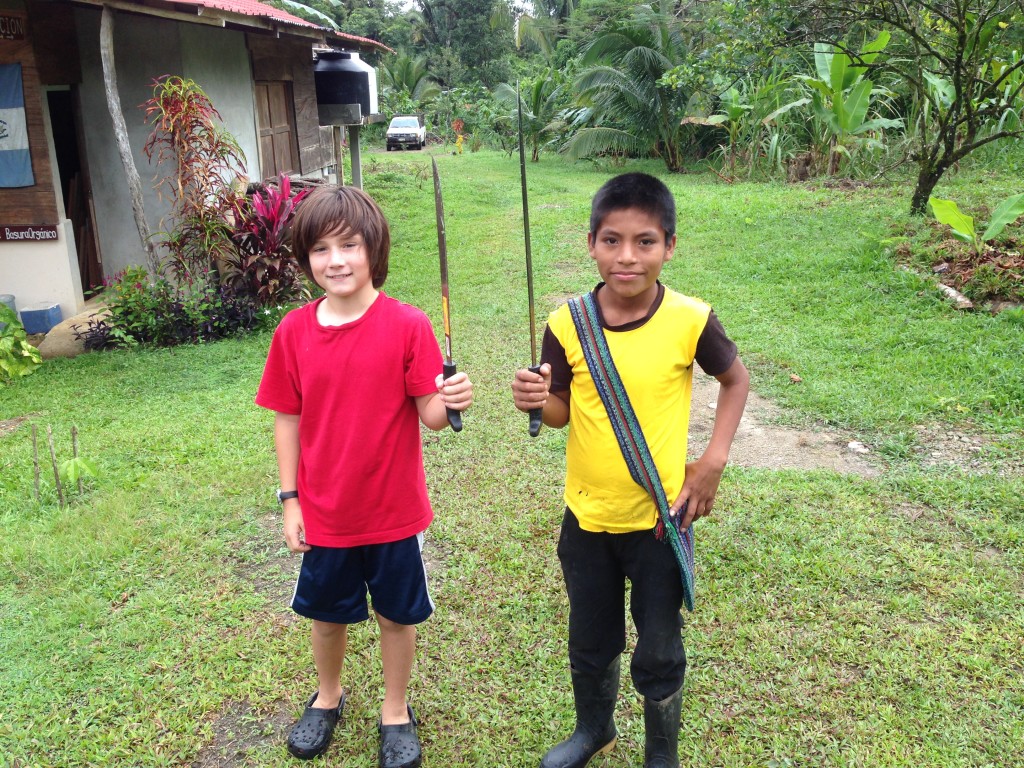
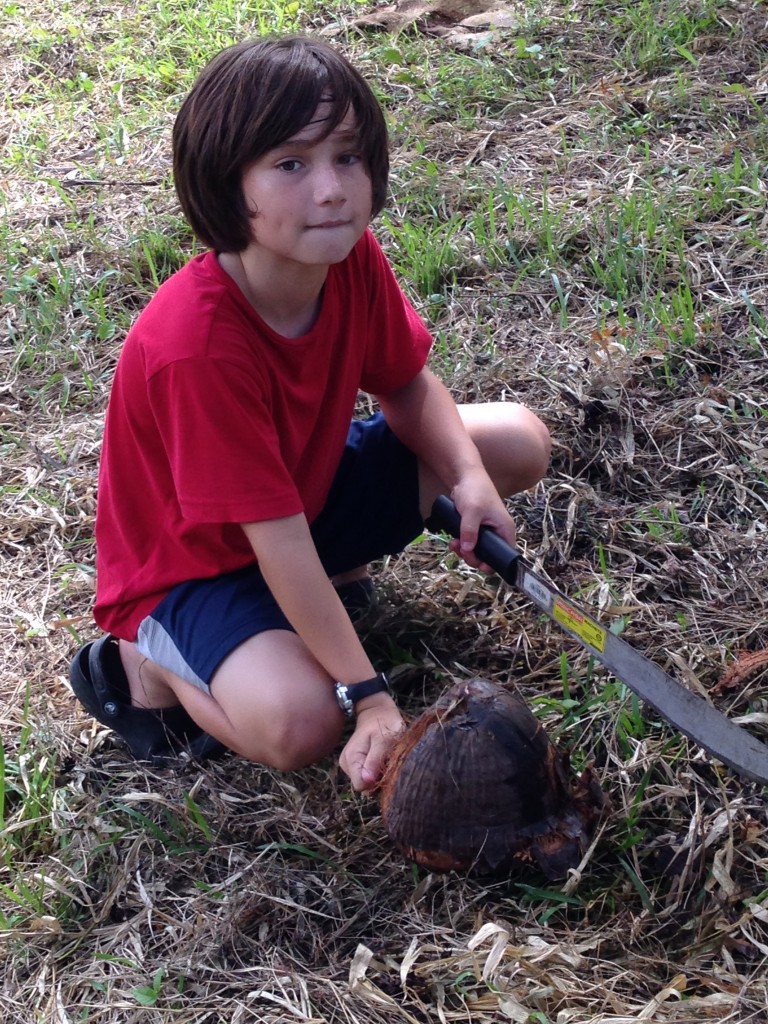
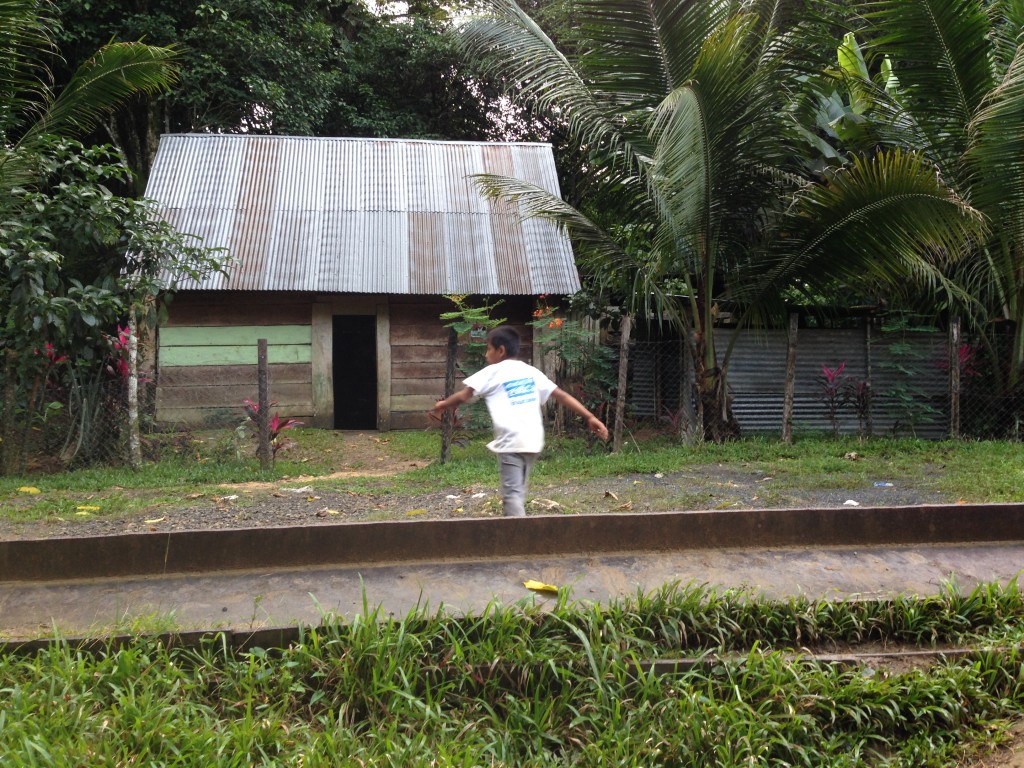
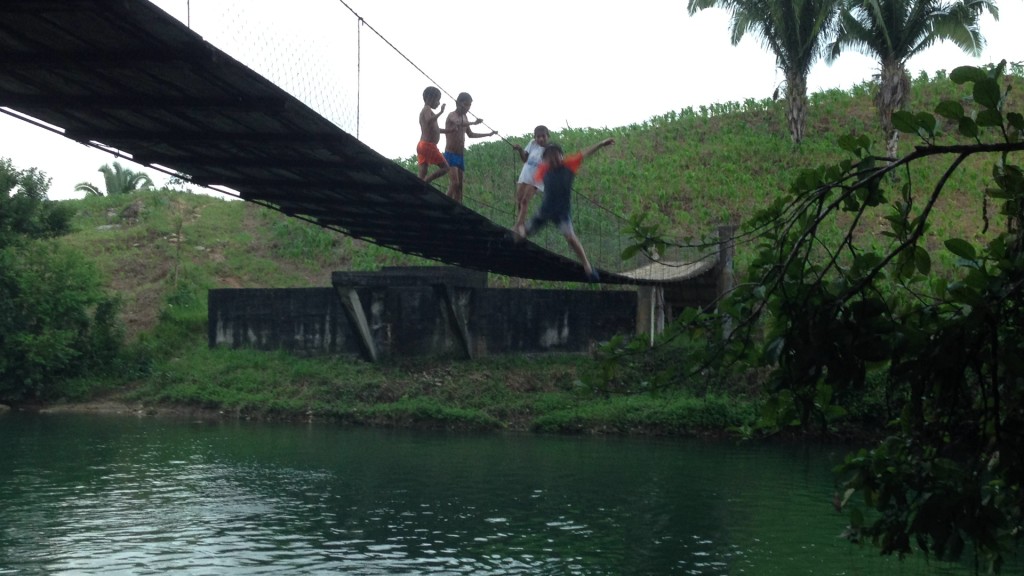
Earlier this week we planned to stay at a Japanese guest house in Quirigua, a small town near some off-the-beaten track Mayan ruins, so that R could rest from her recent infirmities, the kids could catch up on homework, and I could visit the ruins. However, after finding the guest house – which was no easy task – we learned there were no rooms available. So it was back in the car for another 200 kilometers to Guatemala City. After a few hours of driving, we were all hot and cranky and R was fading, so we ended up at a hotel with a pool and water slide in Santa Rosa where we stayed for two nights.
"Where are we going to sleep?"
When Coconut was three, we flew to the Bahamas to meet some friends who were cruising in their 44-foot sailboat, Belisana, for the year. We told Coconut beforehand that we would be staying on the boat with our friends, so when they came to pick us up in the dinghy from wherever it was the puddle jumper dropped us off, Coconut was a little confused. She whispered to R, “Where are we all going to sleep?”
Having Wesley solves that problem – we can all sleep comfortably inside the van. My preference is to camp because it’s cheaper, and also, like a younger sibling, Wesley has become part of the family and it’s a little sad when we roll the slider door shut and walk away for the night. One couple we met in Oaxaca told us that when they have guests to their home, they offer the guests their own bedroom and sleep in their van in the garage. We understand that sentiment. There have been a few times when we’ve rented a hotel room and R or I have slept in the van on the street. It’s nice and cozy.
Sometimes it is too hot to sleep in the van, or sometimes we have slept in the van a few days in a row and we need a shower, or the kids will request a room with WiFi. For example, Coconut asked if we could get a room for Christmas because she didn’t want to drive on that day. That was a reasonable request – how else would Santa have found us – so we got a room. If we get a hotel room, it is usually a place suggested by our guidebook or that R has found online. If we plan to be around a while, we will look for an AirBnB place.
In most cities there are no convenient places to camp and we end up in a room because we would have to camp too far out of the city to visit the places in the city that we want to visit. Once camp is set up, it’s an involved process to break it down to drive around town, so we don’t usually do that. Guanajuato and San Cristobal de las Casas, both in Mexico, were two exceptions where campgrounds were within walking distance of the city center – though, in Guanajuato, we called the campground a “yonke” (junkyard) because there were several rusted out autos on the grounds.
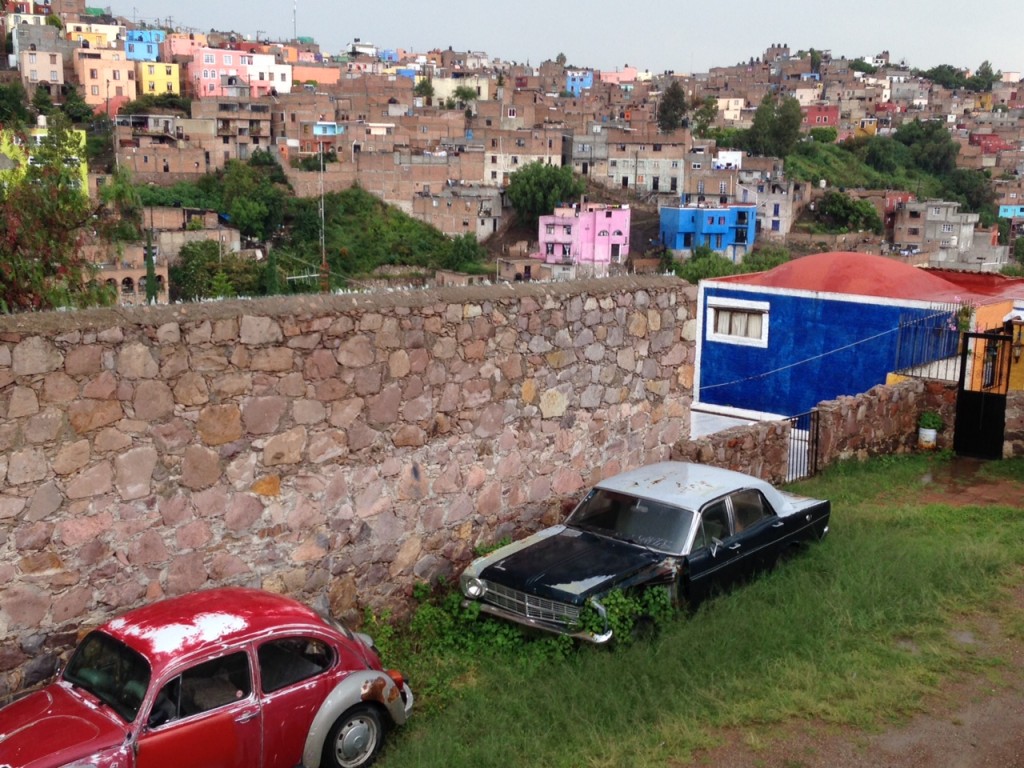
"What’s for dinner?"
Wesley comes equipped with a two-burner propane stove, and we brought along our camp stove, so we can cook our meals at home. If we aren’t camping, we look for rooms that have a private kitchen or access to a communal kitchen. R has become expert at baking a pizza on the bottom of a cast iron frying pan.
Of course, part of the fun of traveling is that you get to eat all the tasty foods native to the place that you are visiting. One of our favorite things to do in Oaxaca was to visit the Friday street vendor food market in Llano park to get the pork rib tacos for 5 pesos each. Overall, we prefer the food in Mexico. It was cheaper than in Guatemala, and tastier – we eat these things in Guatemala that they call tortillas but the Chicago Black Sox may have used them in 1919 for baseball gloves.
We also loved the abundance of fresh fruits and vegetables in Mexico. And the fresh squeezed juices. Consistently, the vegetables on offer in Guatemala are yellowed broccoli, wrinkled string beans, and sad-looking cauliflower. The fruits are just as pathetic - waxy apples and believe it or not, it’s hard to find a decent banana. Guatemala does have seedless watermelons, which is the only kind the kids will eat, and the pineapples are outstanding. We drove through Puerto Barrios the other day, which is a city on the Caribbean coast where Dole, Del Monte, and Chiquita have shipping facilities, and stopped at a few roadside stands for some of the sweetest pineapples ever. They cut it in quarters, with the hard center intact, so it’s like you are eating pineapple on a stick.
The only other food that stands out in Guatemala is the fried chicken from Pollo Campero – but this is basically fast food and you can now get it in the states, including in Alexandria. So, we’ve done a lot of eating at “home” – eggs and rice, roasted potatoes, salads, pasta.
So, that's it. That's how we've taken the two greatest obligations a parent has to his or her children and turned them into our only responsibilities. It's a pretty low-stress lifestyle - no worrying about schedules or who needs to be where at what time - and for all the benefit that Coconut and J will get out of it, the more immediate benefit seems to have accrued to R and I. In fact, while reading "Life of Pi" yesterday, I came across this thought penned by Yann Martel, the author. He writes, "I have nothing to say of my working life, only that a tie is a noose, and inverted though it is, it will hang a man nonetheless if he's not careful.
